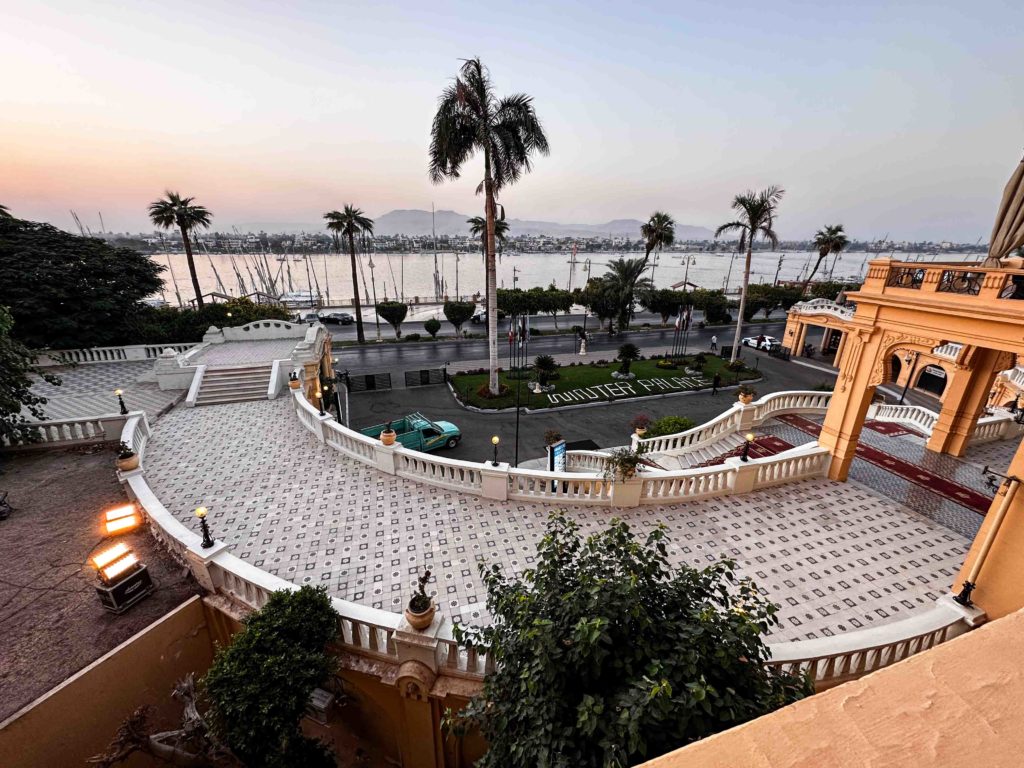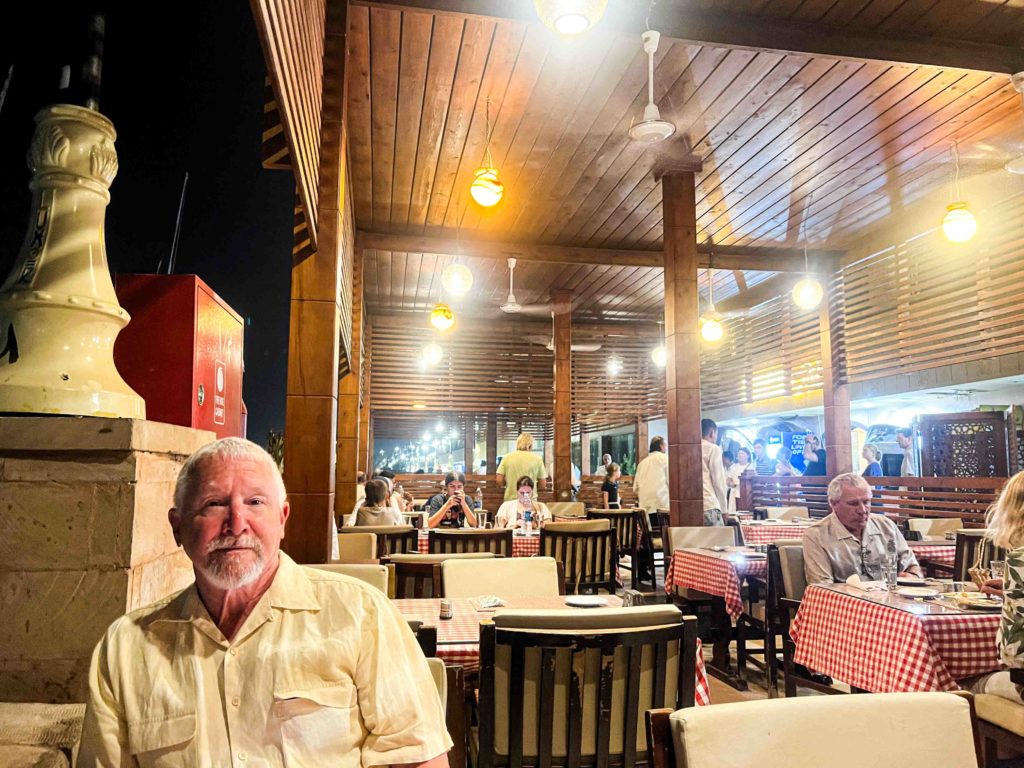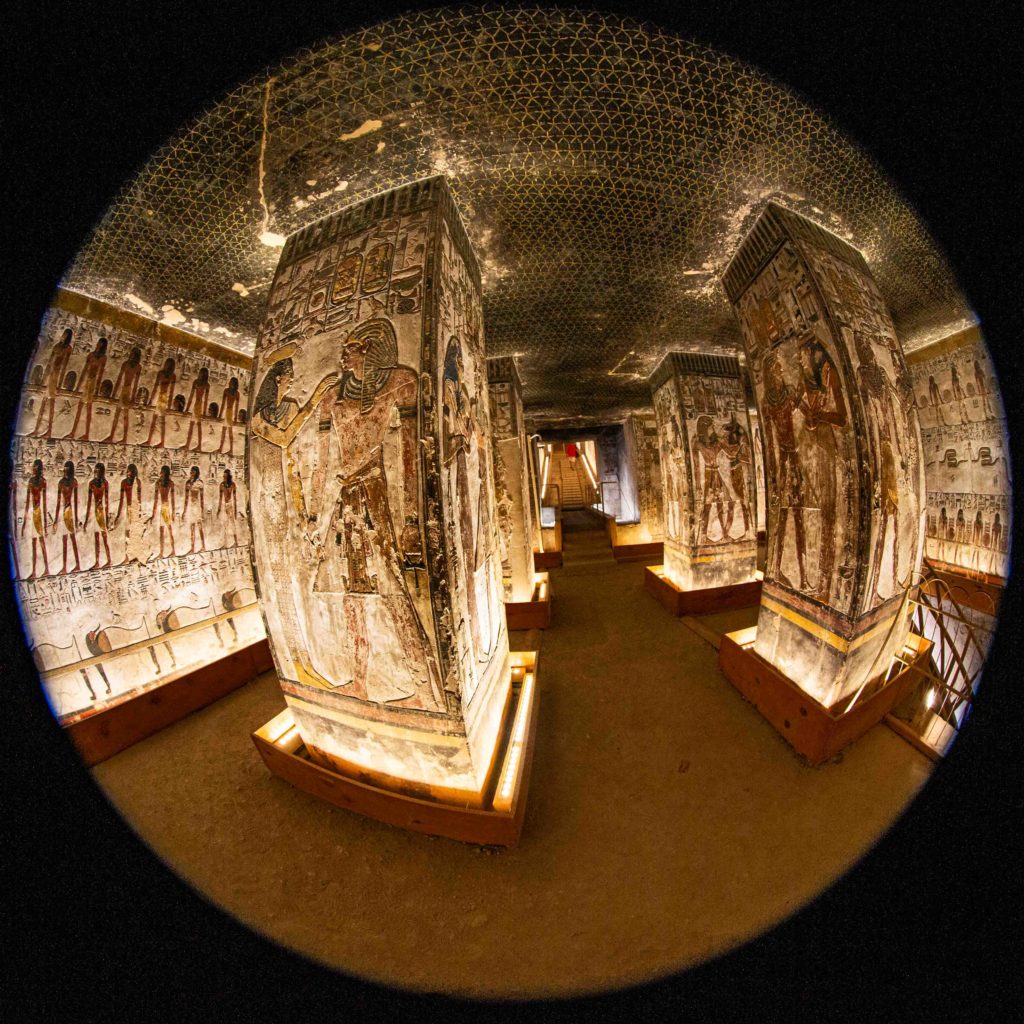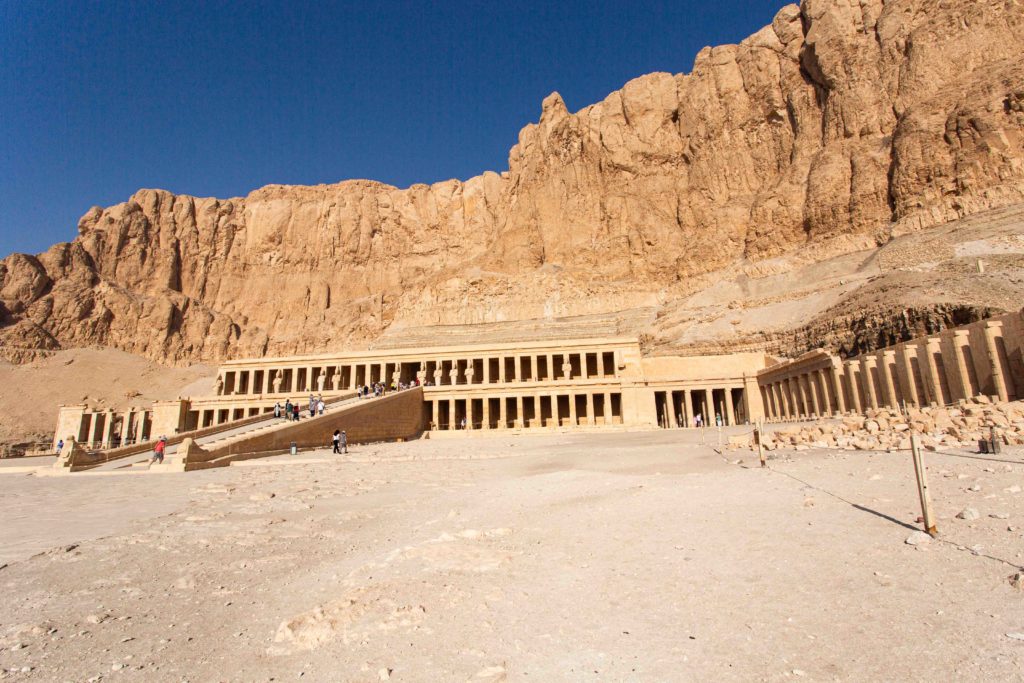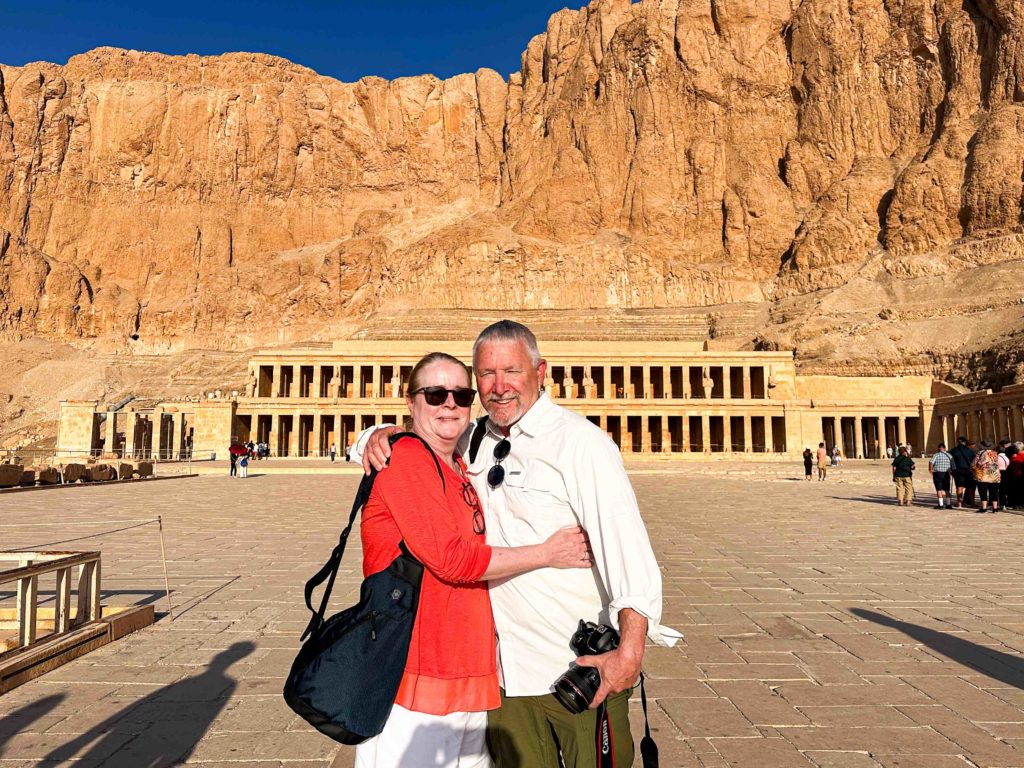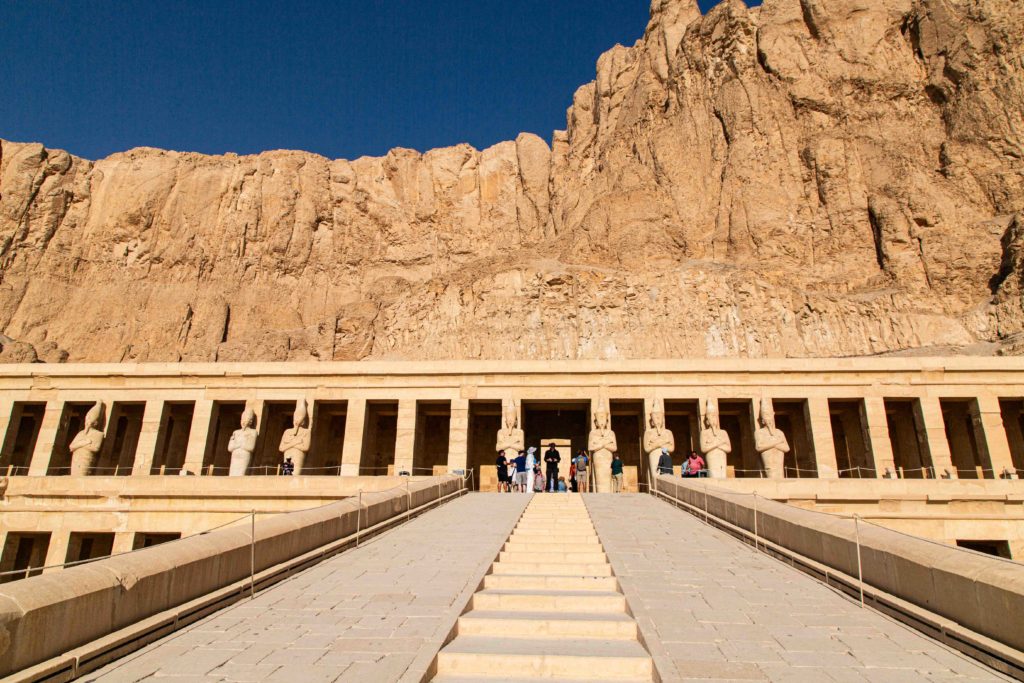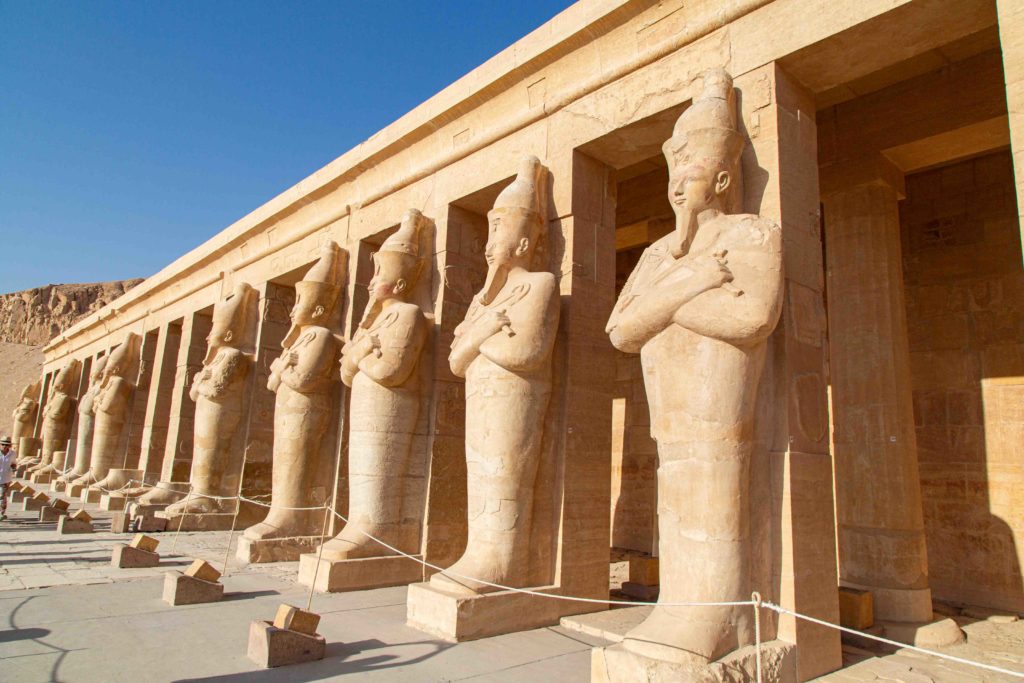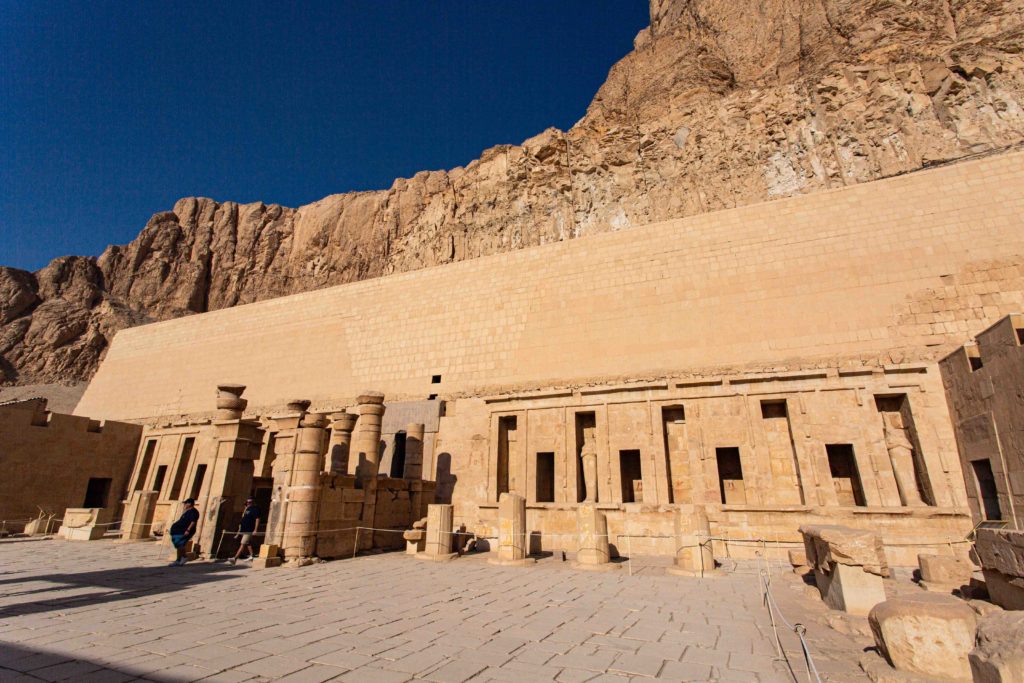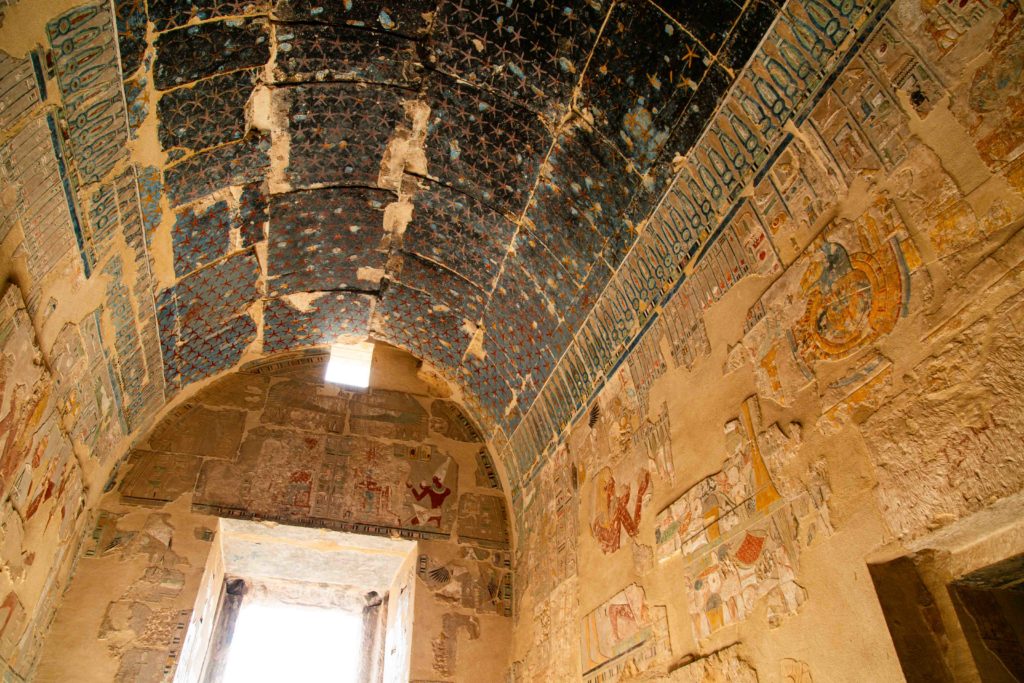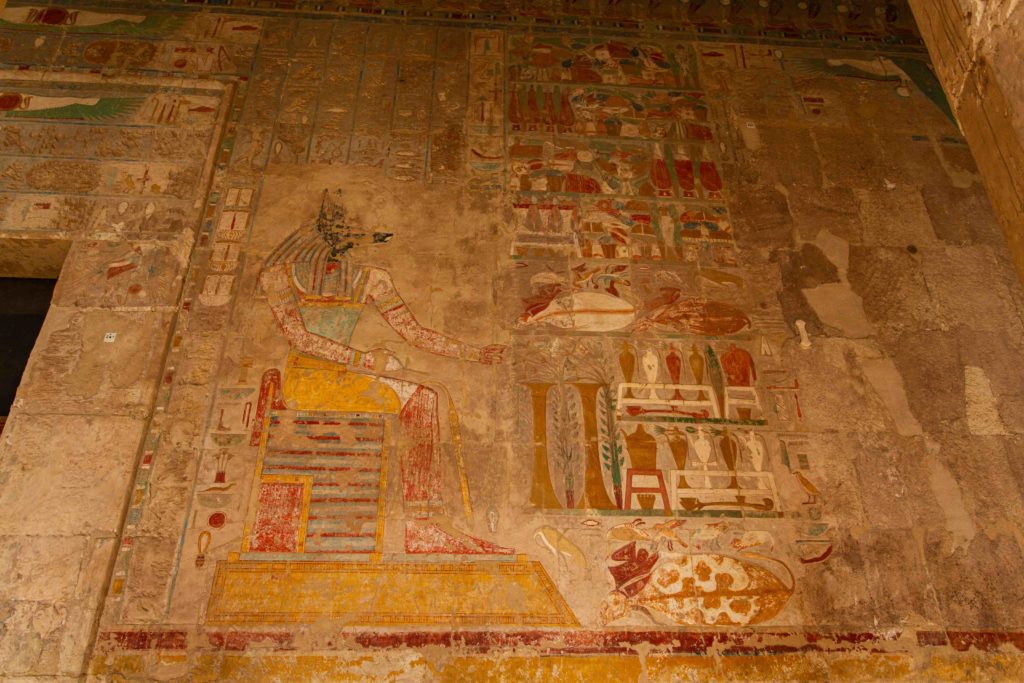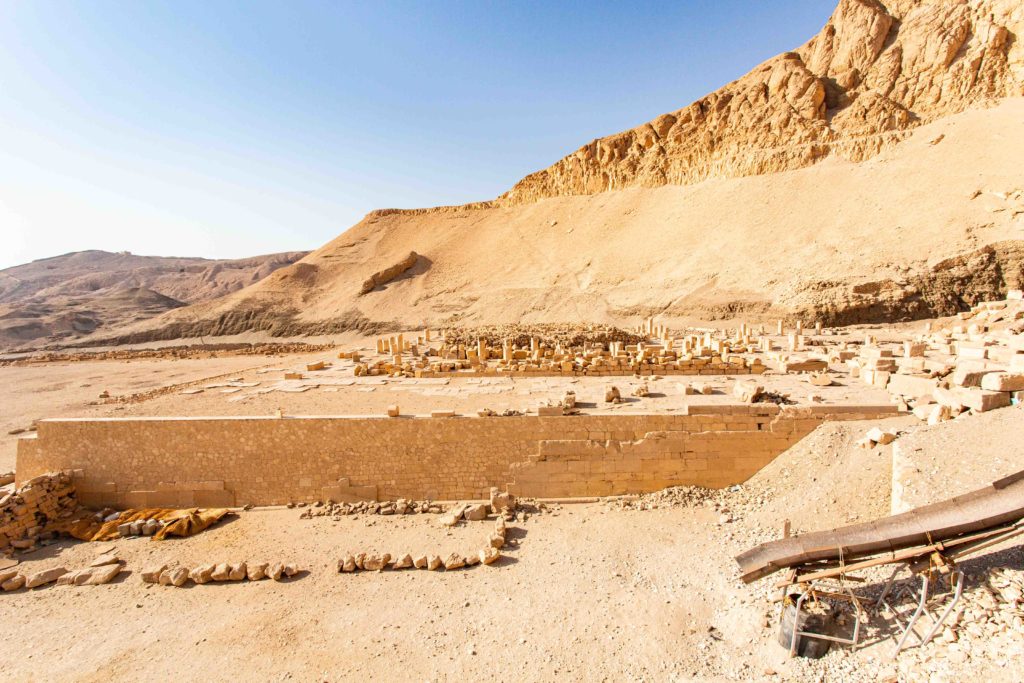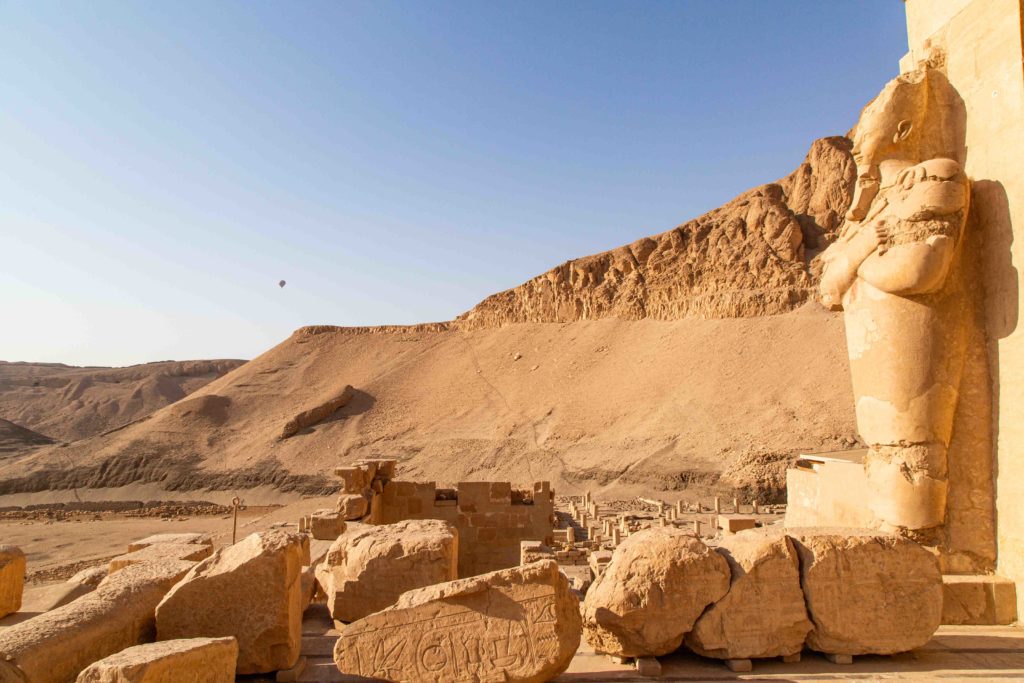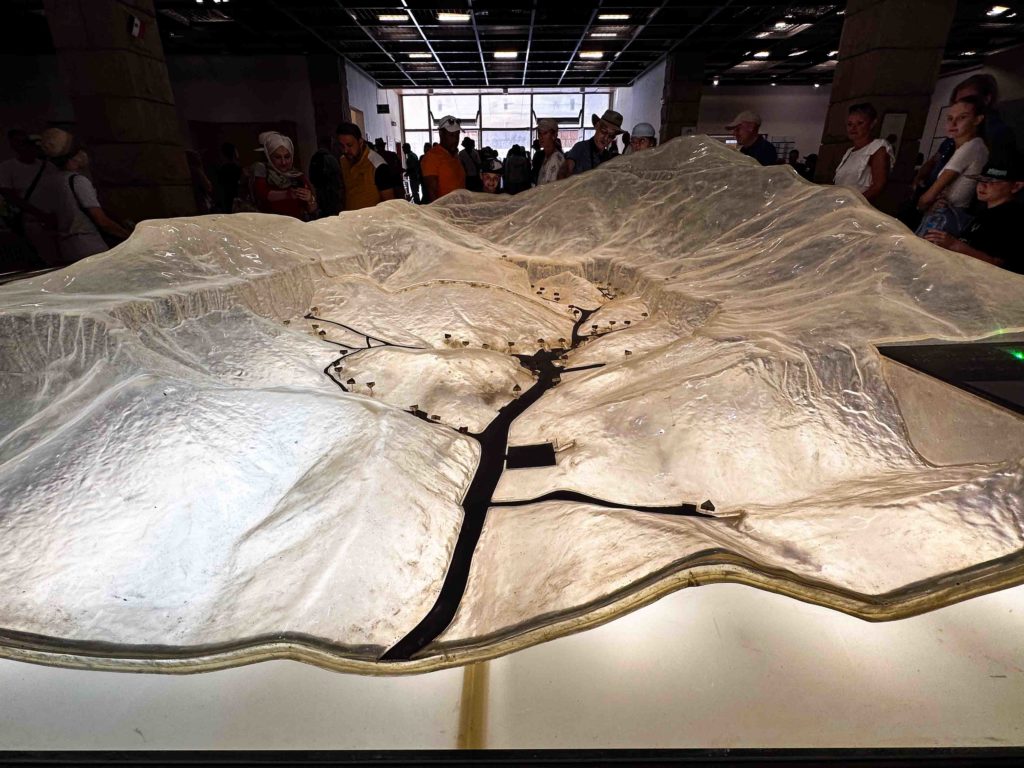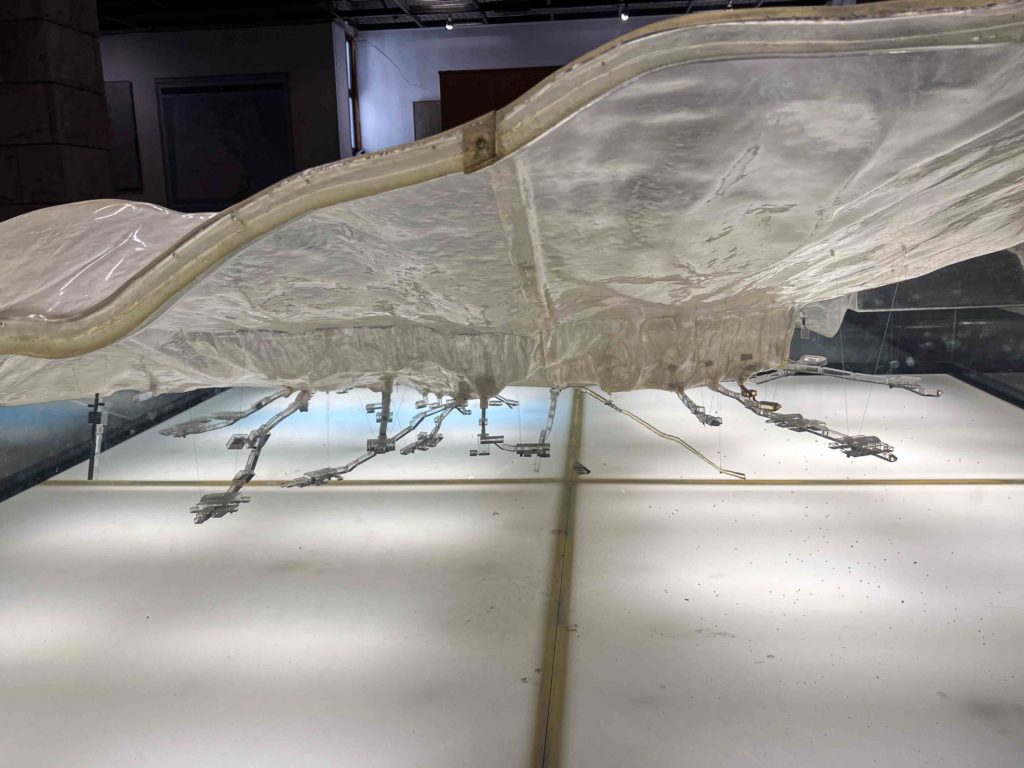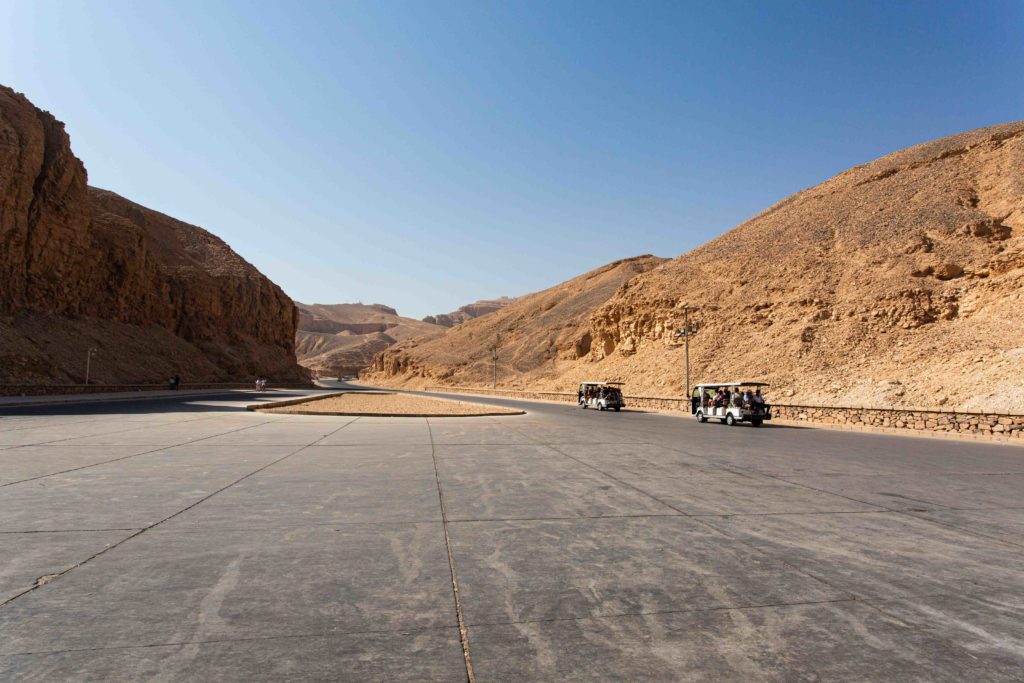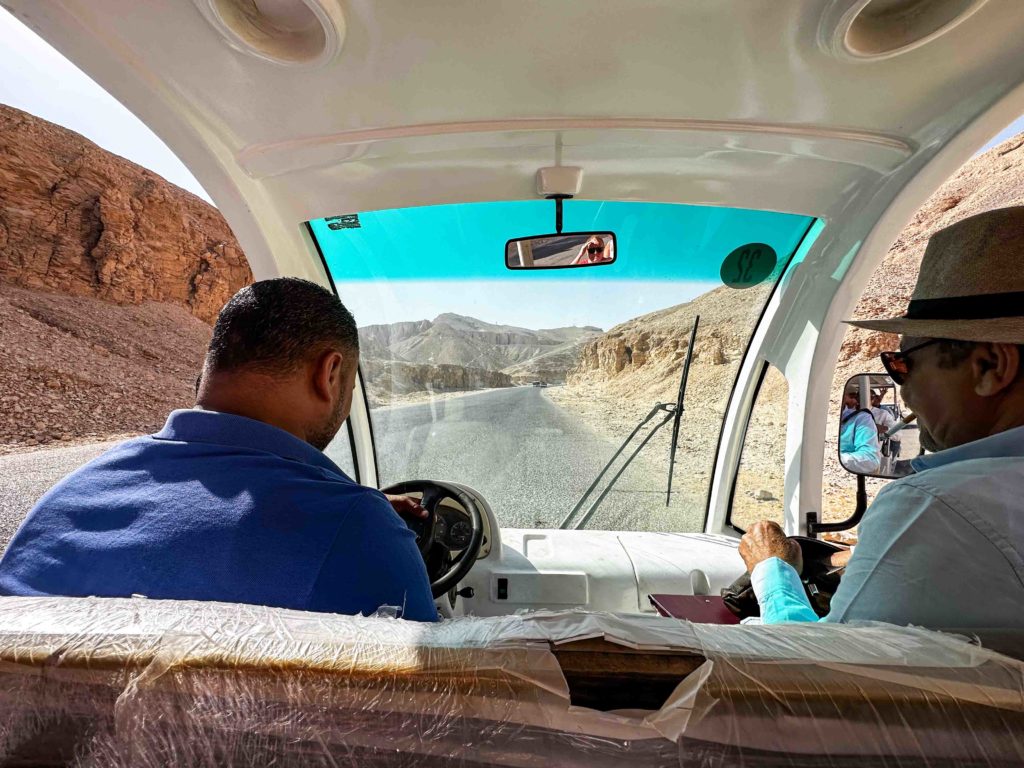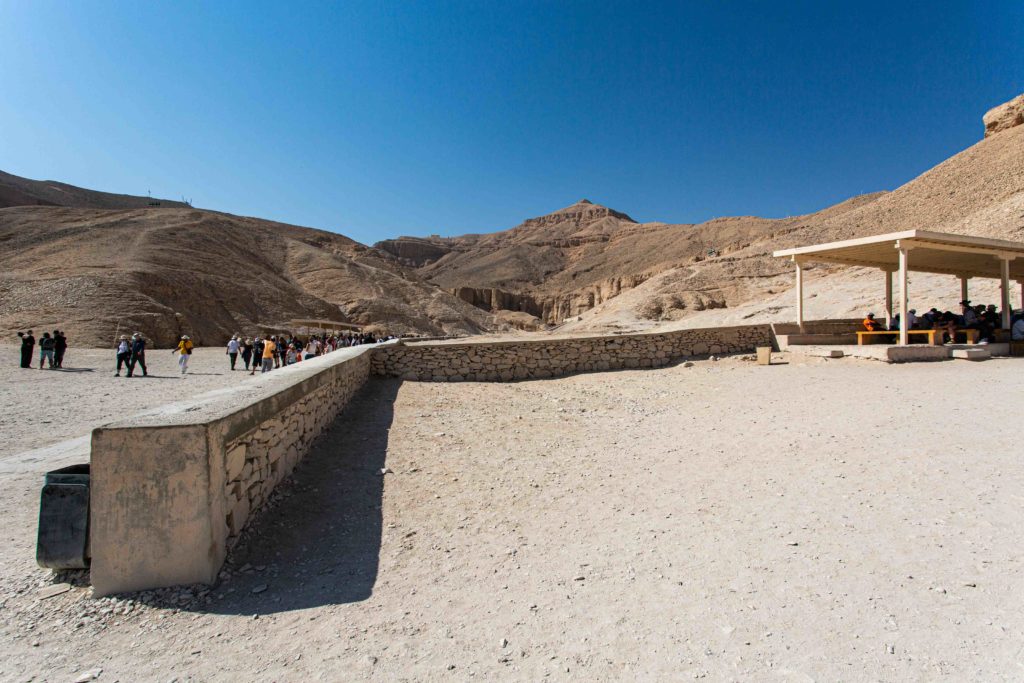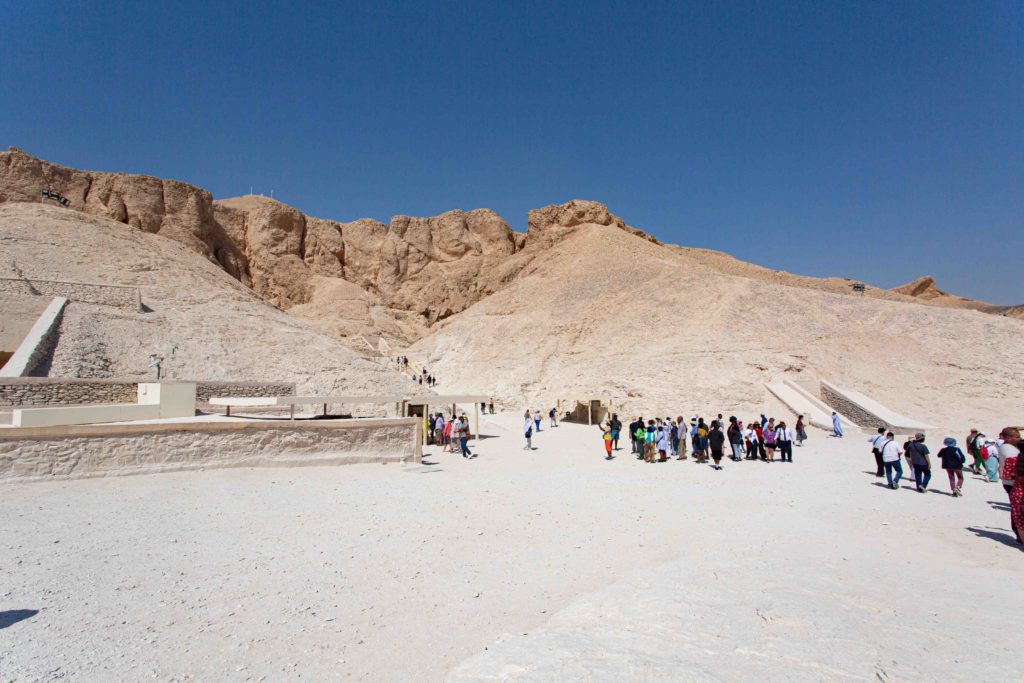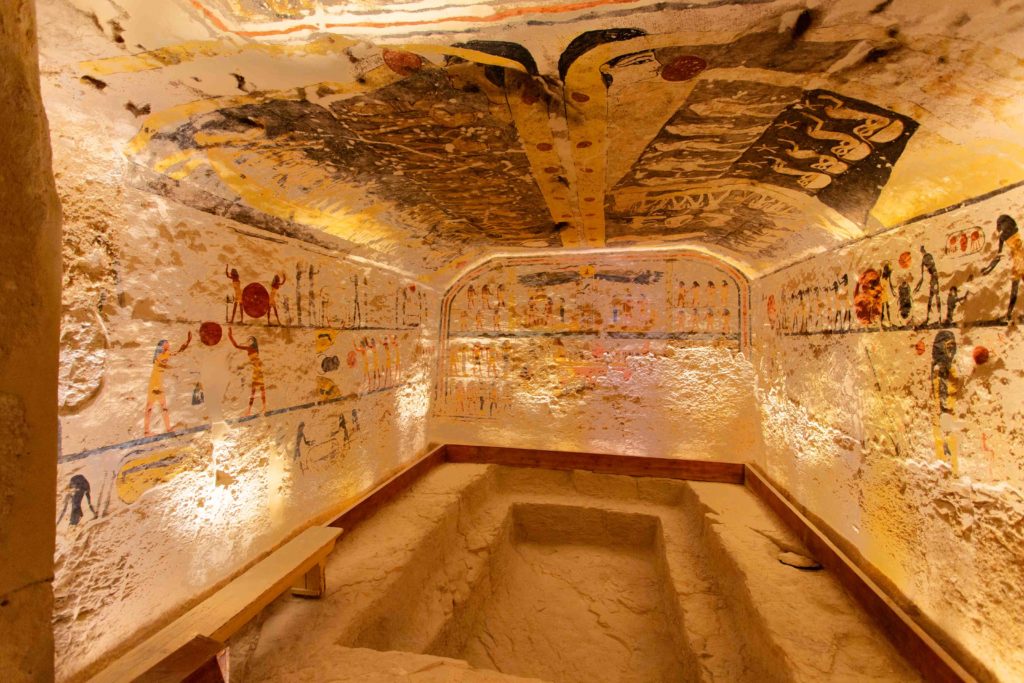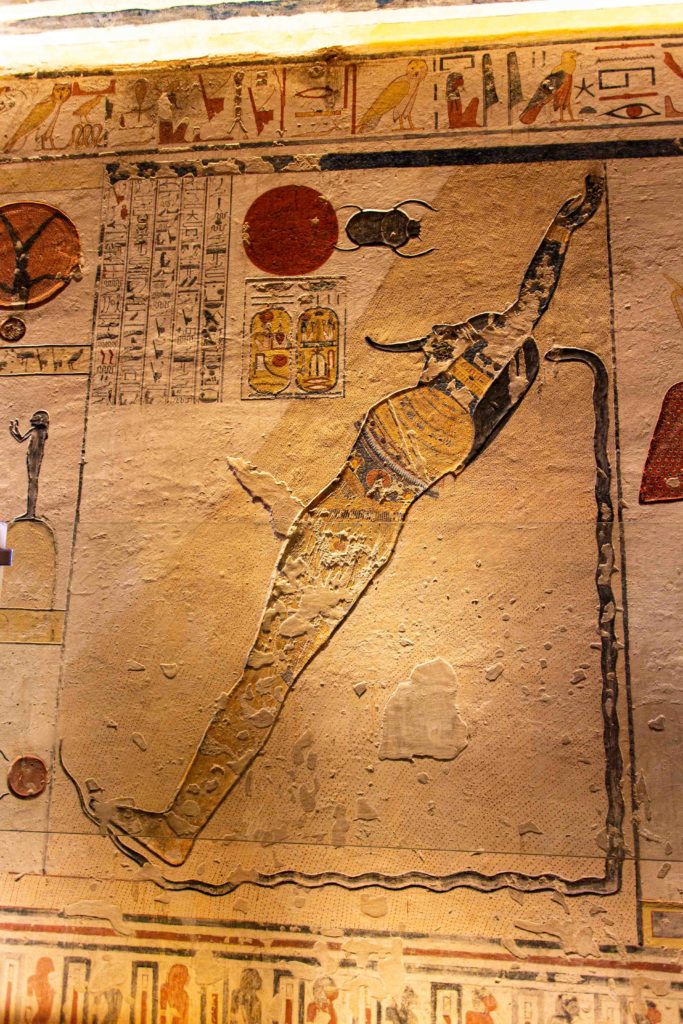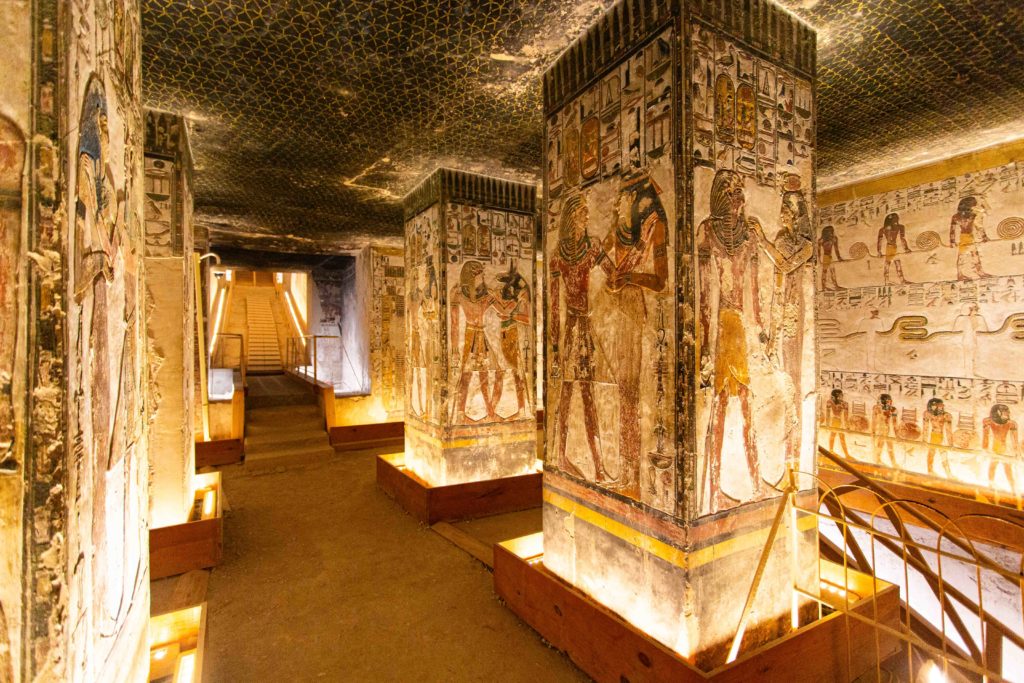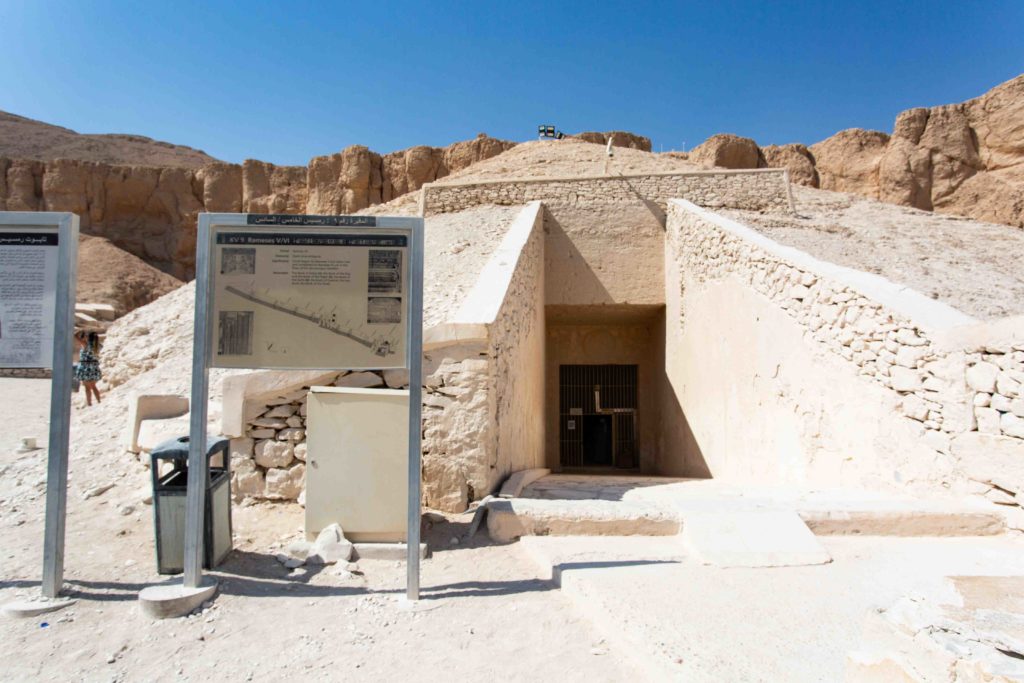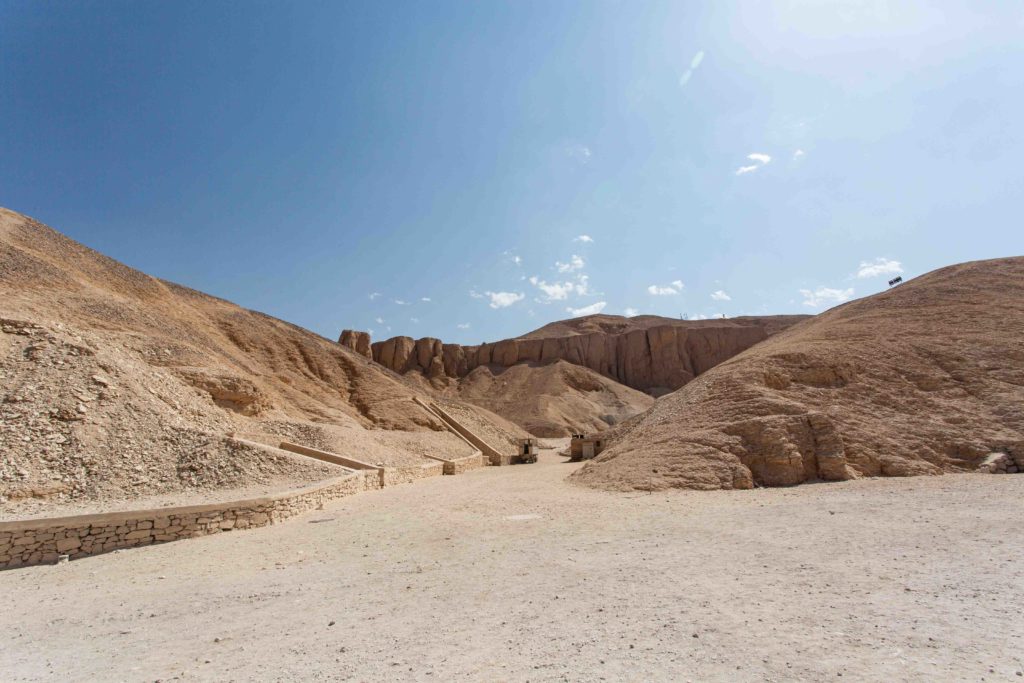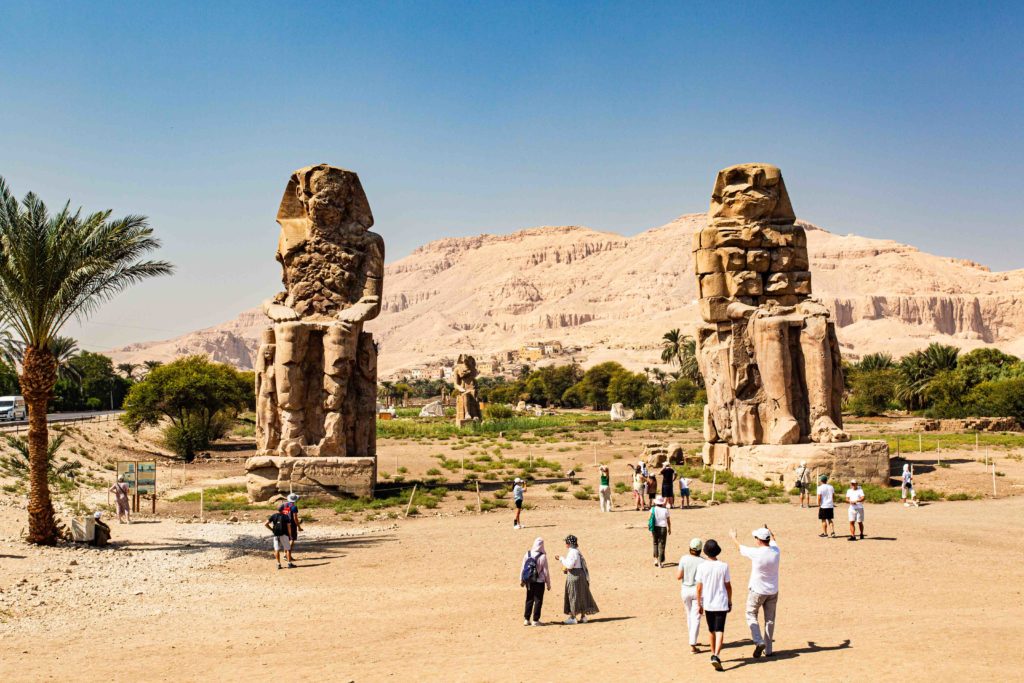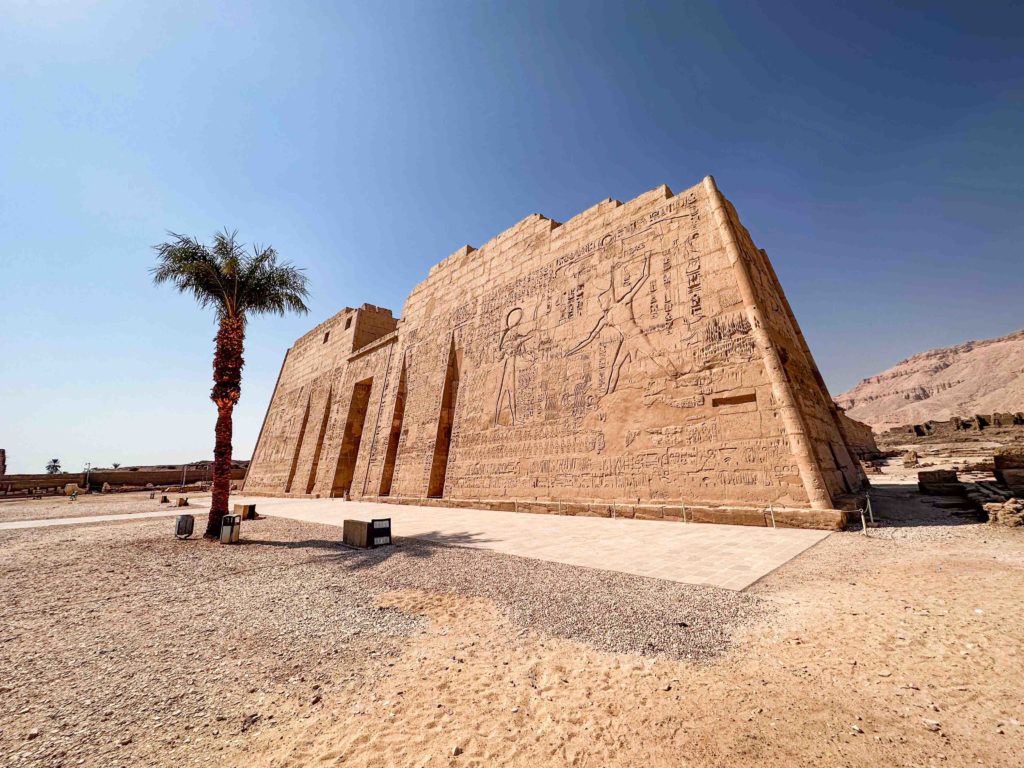
Our tour of the Theban Necropolis continued today with our first stop being the Ramesseum, the funerary temple of Ramses II. In many ways this was like other temples we have visited except this has the remains of a 60+ foot colossal statue of Ramses II. Mohamed told us that this stone had to be transported from Aswan, this type of stone was not available nearby. Weighing more than 1000 tons, the effort to create and move is beyond remarkable. Like I said before Ramses II’s ego must have been off scale.
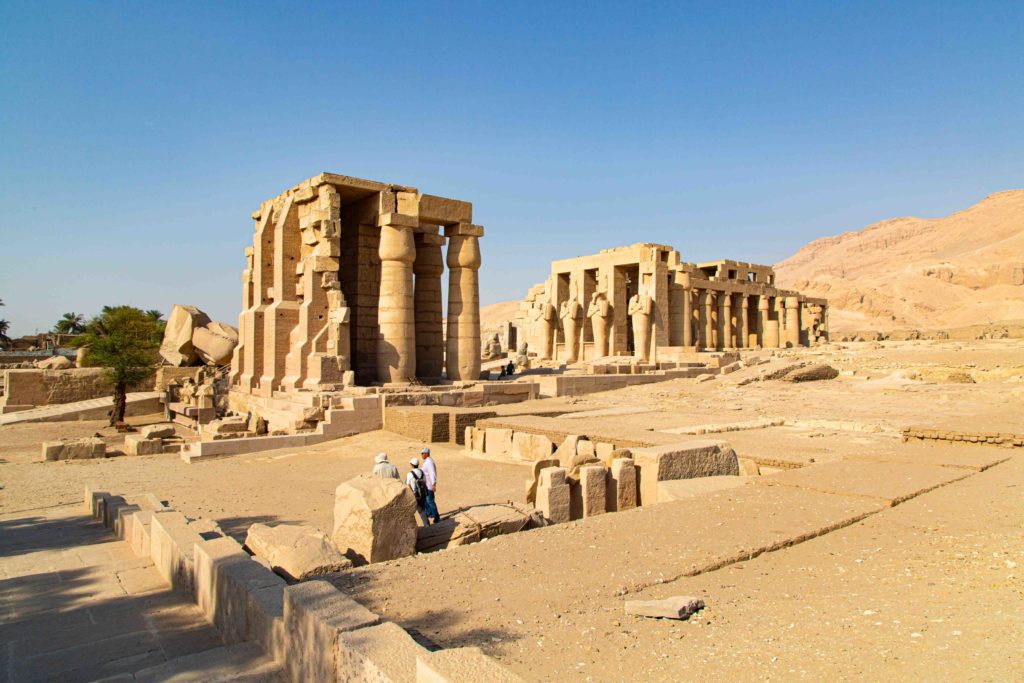
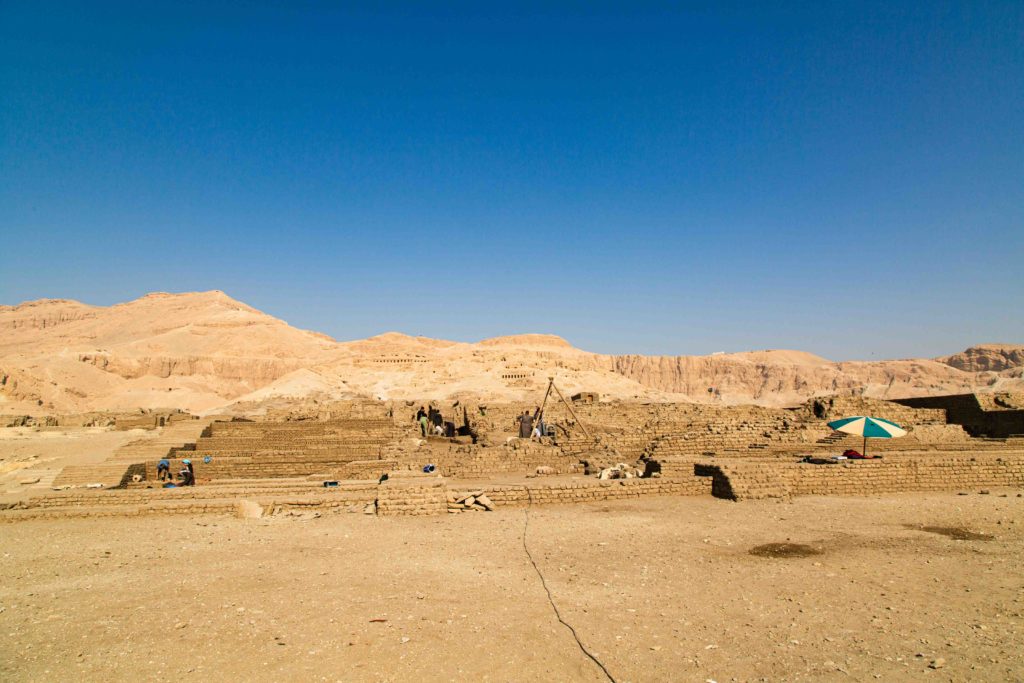
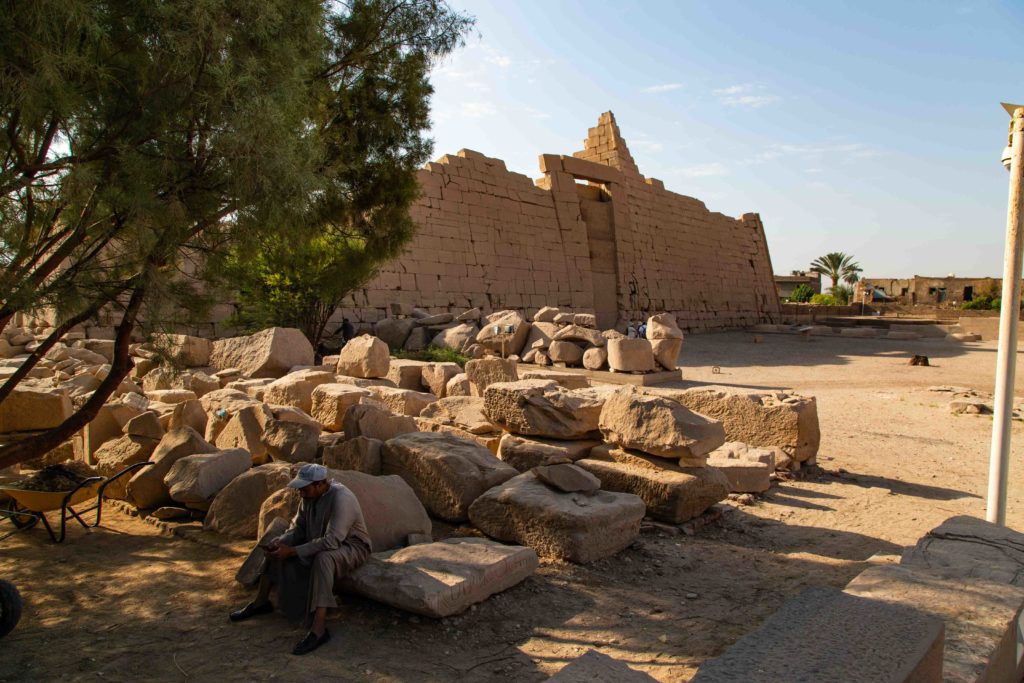
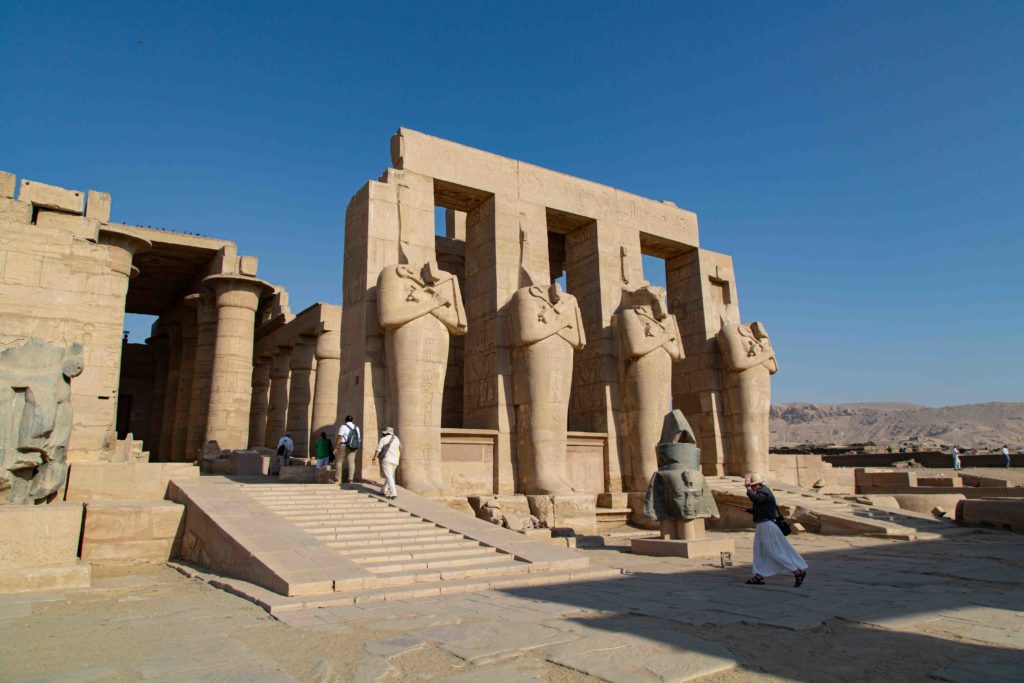

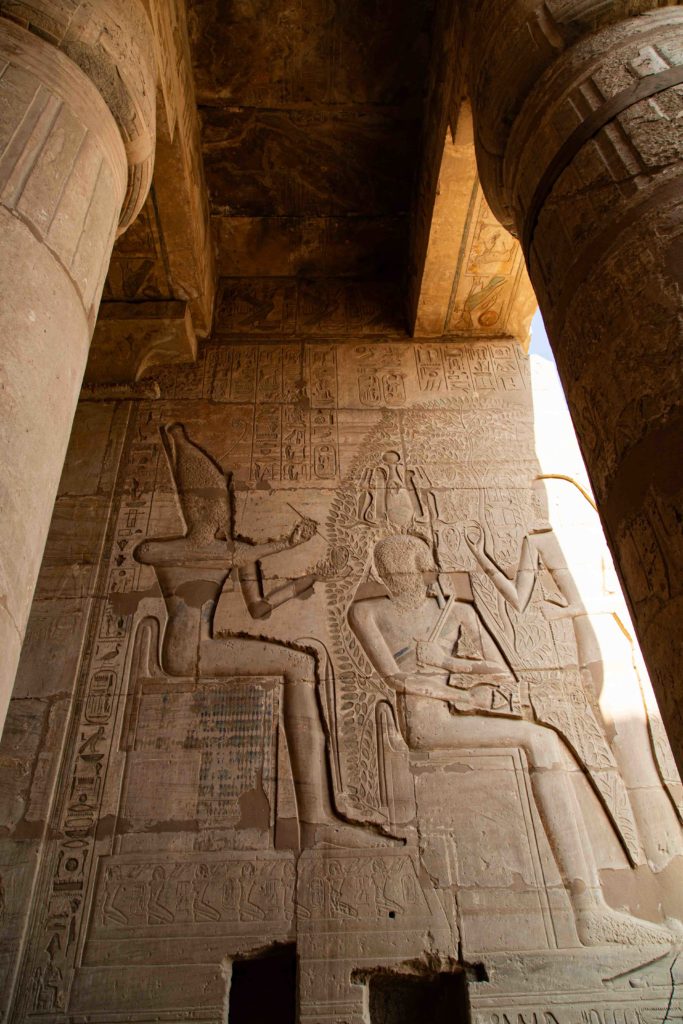

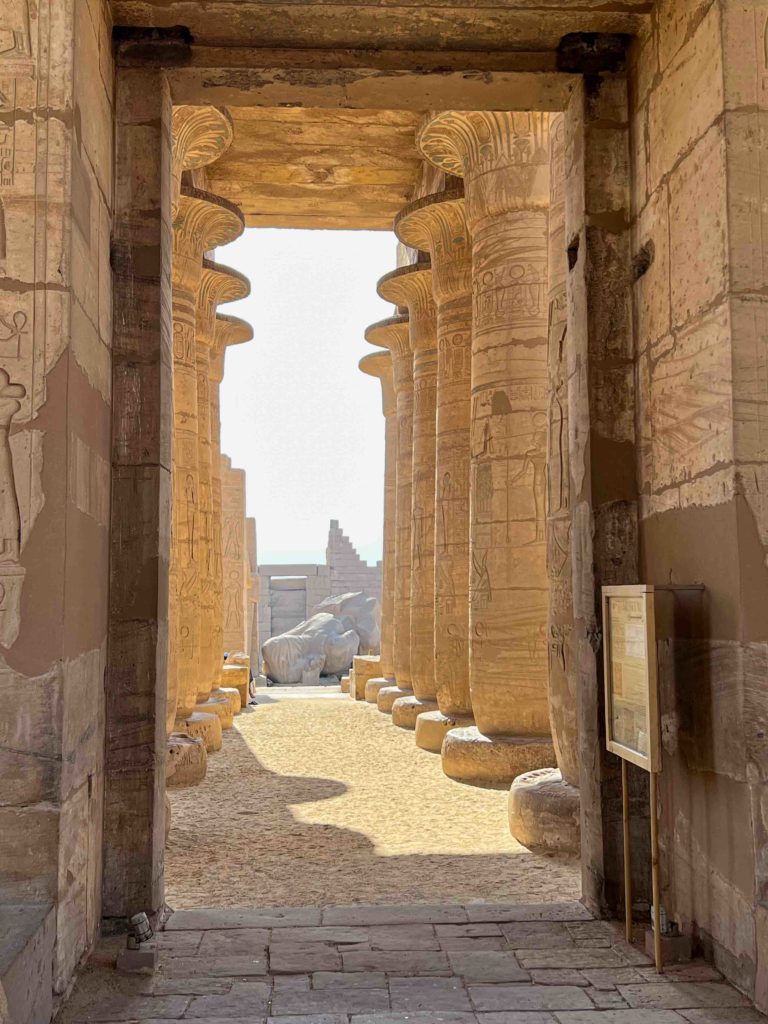
Next we visited the Valley of the Queens where the wives of pharaohs were buried. In ancient times it was known as Ta-Set-Neferu which translates as “the place of beauty.” If that is not diplomacy I don’t know what is.
Many of the high-ranking wives of the Pharoahs are buried here, the most famous being Nefertari, first wife of Ramses II. Her tomb is quite striking.
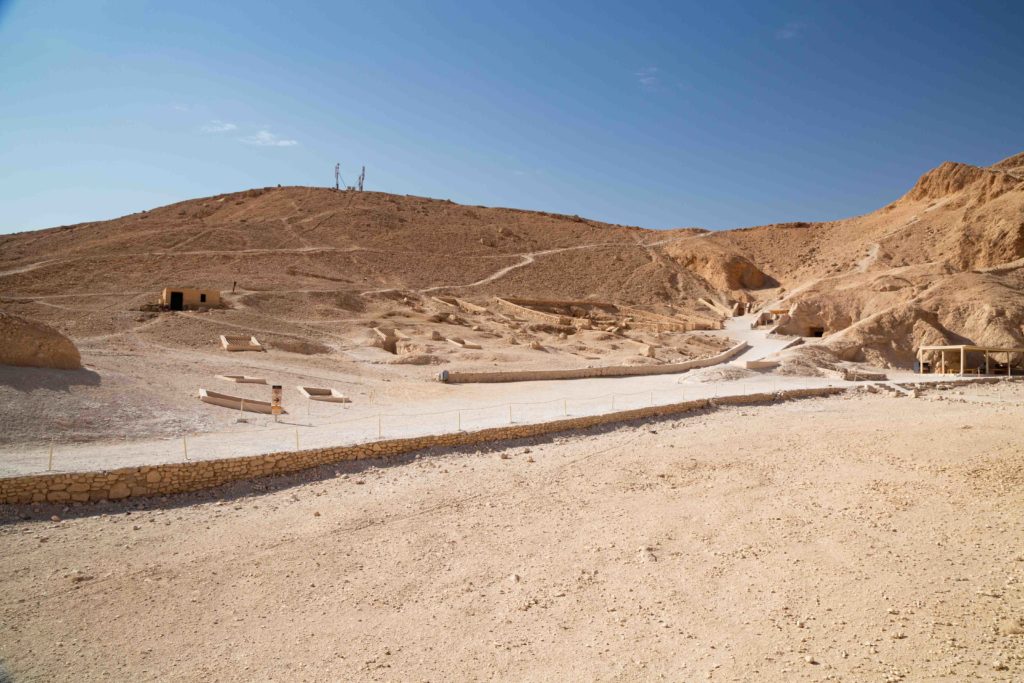
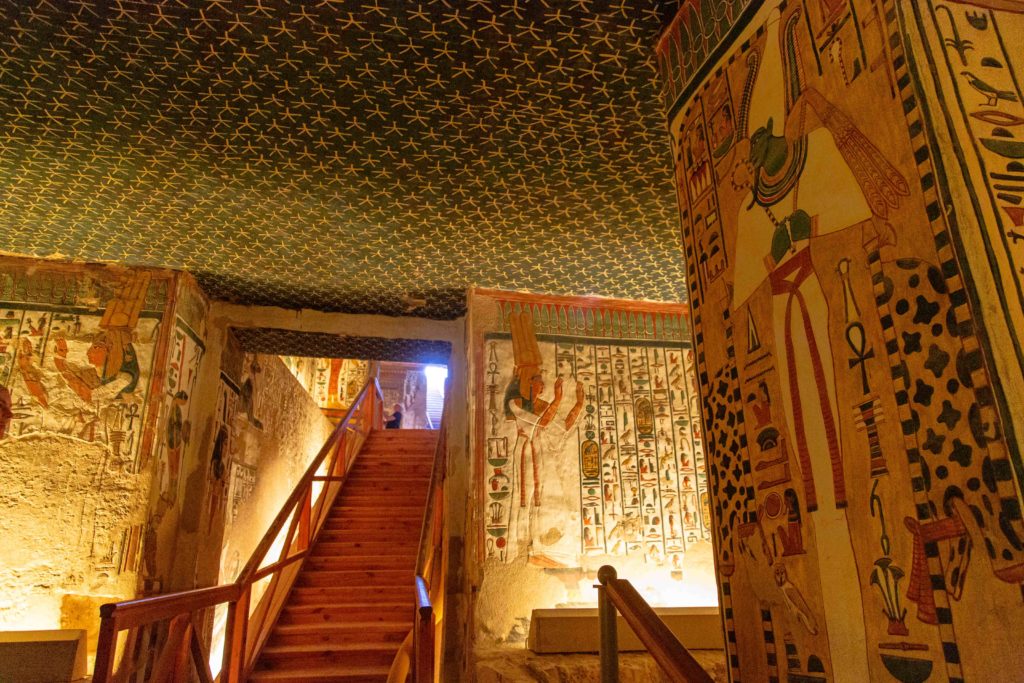

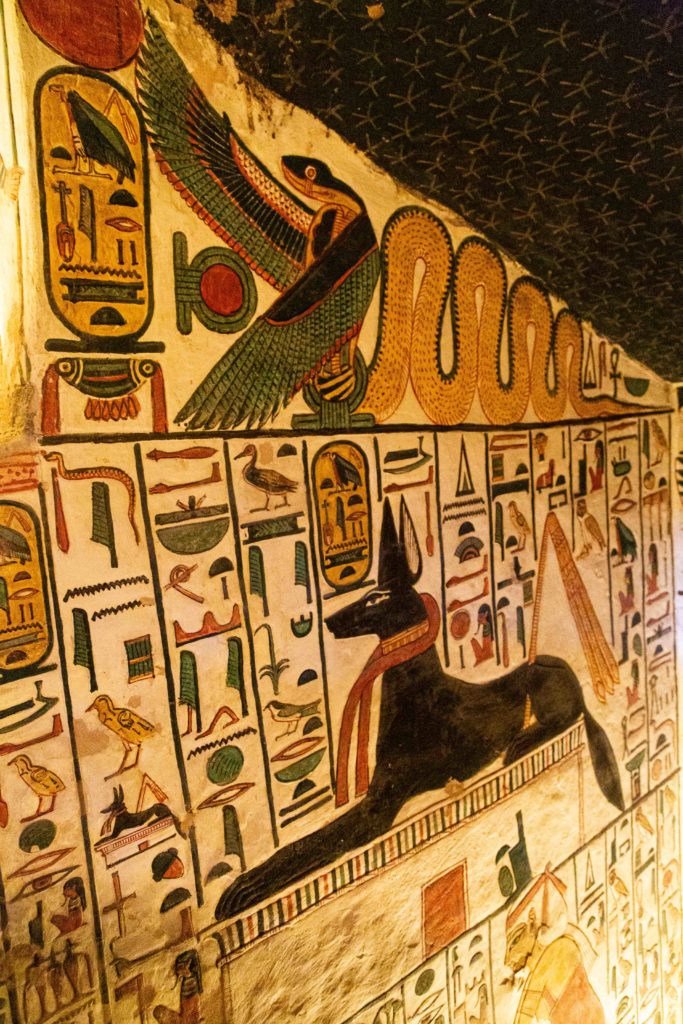

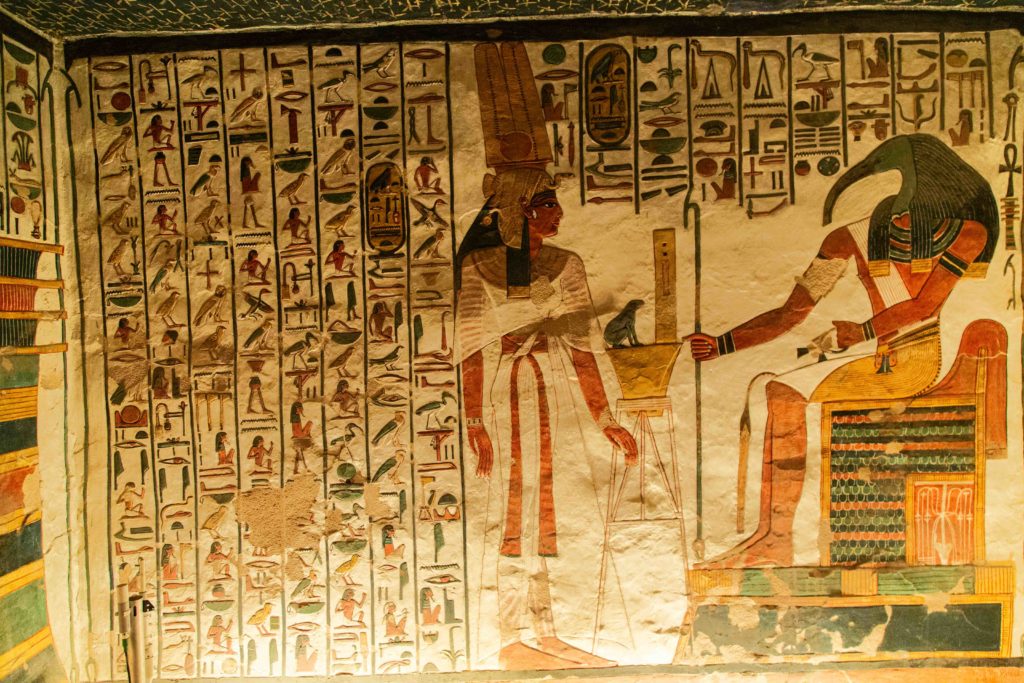
We also visited Ramses III’s wife Queen Tyti’s Tomb, hers in worse condition most likely to her being involved in the conspiracy that killed her husband. A betrayer of the throne is not well treated!
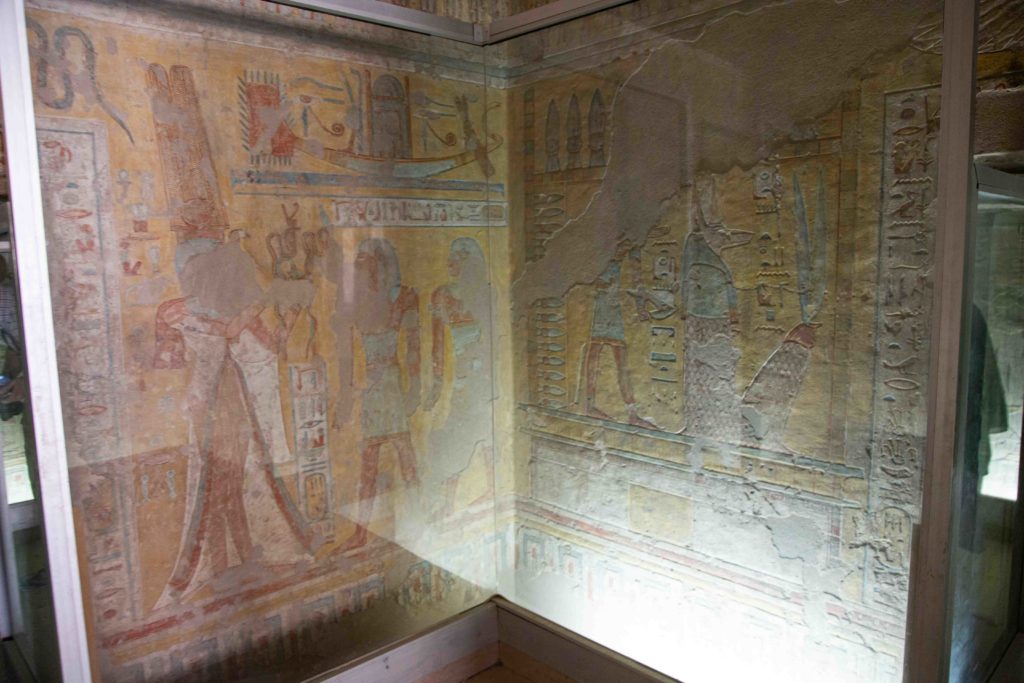
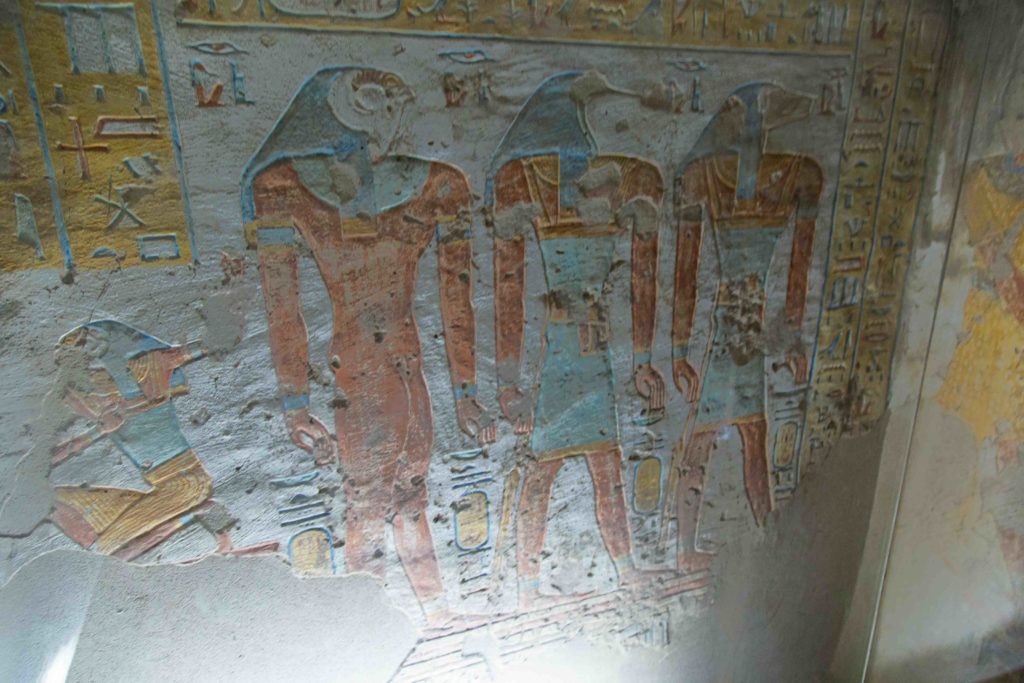
Last stop in this valley was in the Amunherkhepeshef’s tomb, a son of Ramses III who passed at a young age.
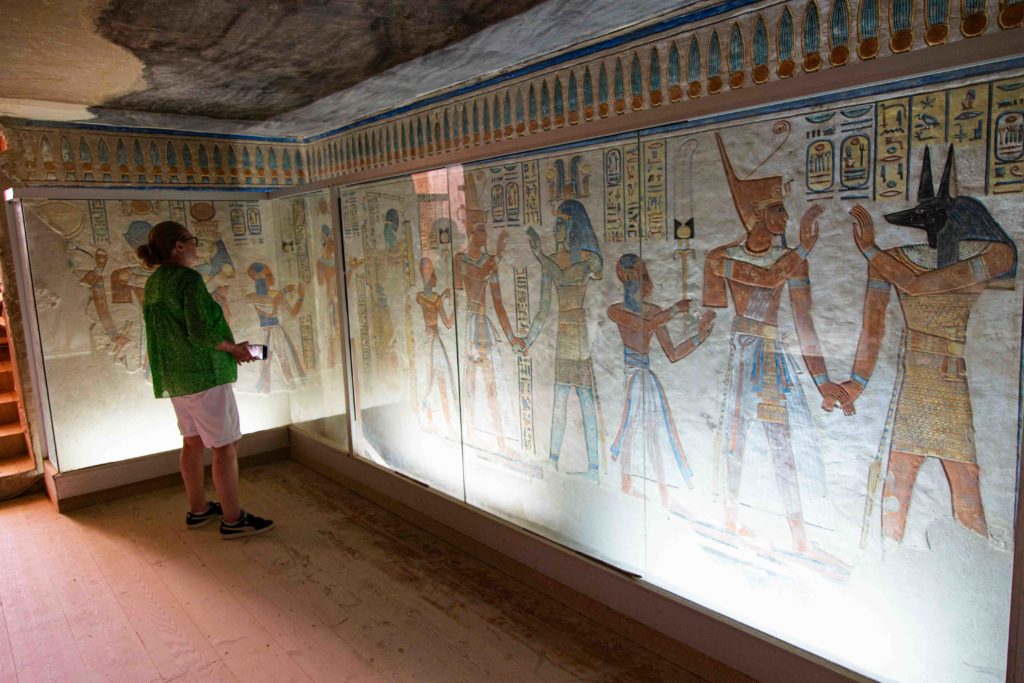
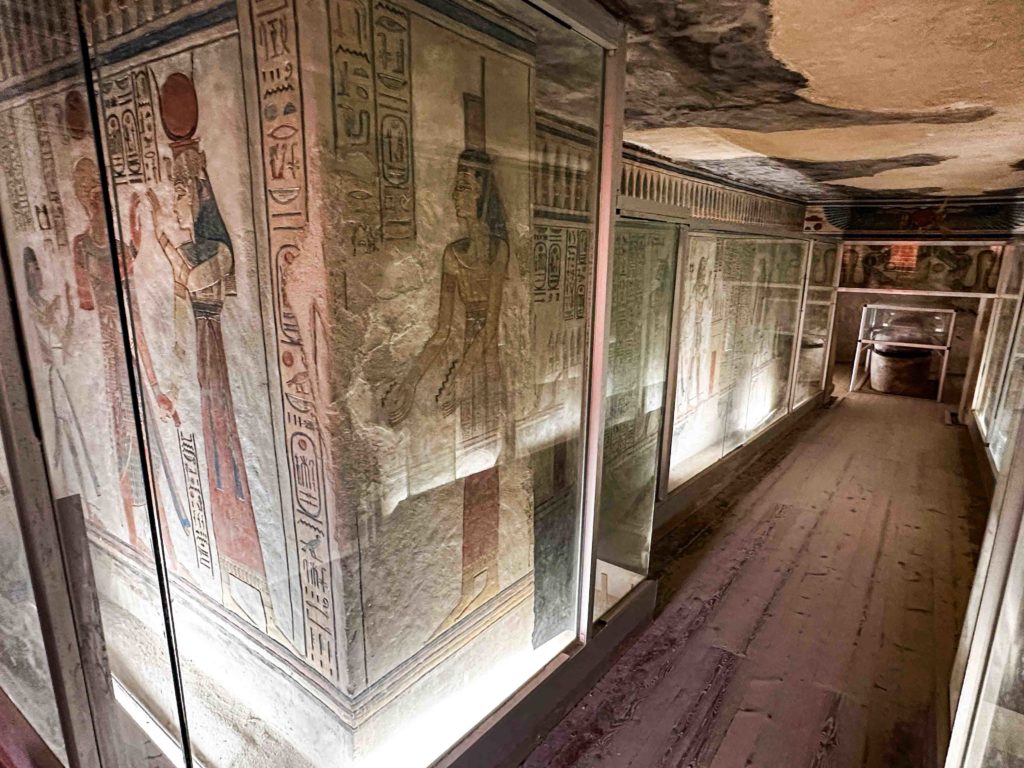
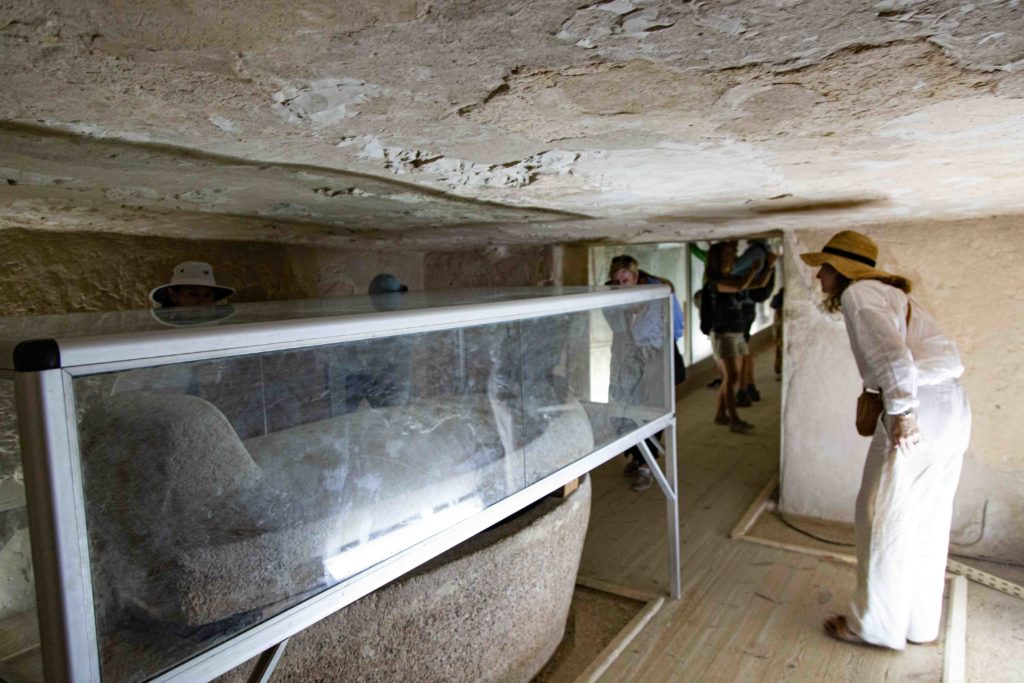
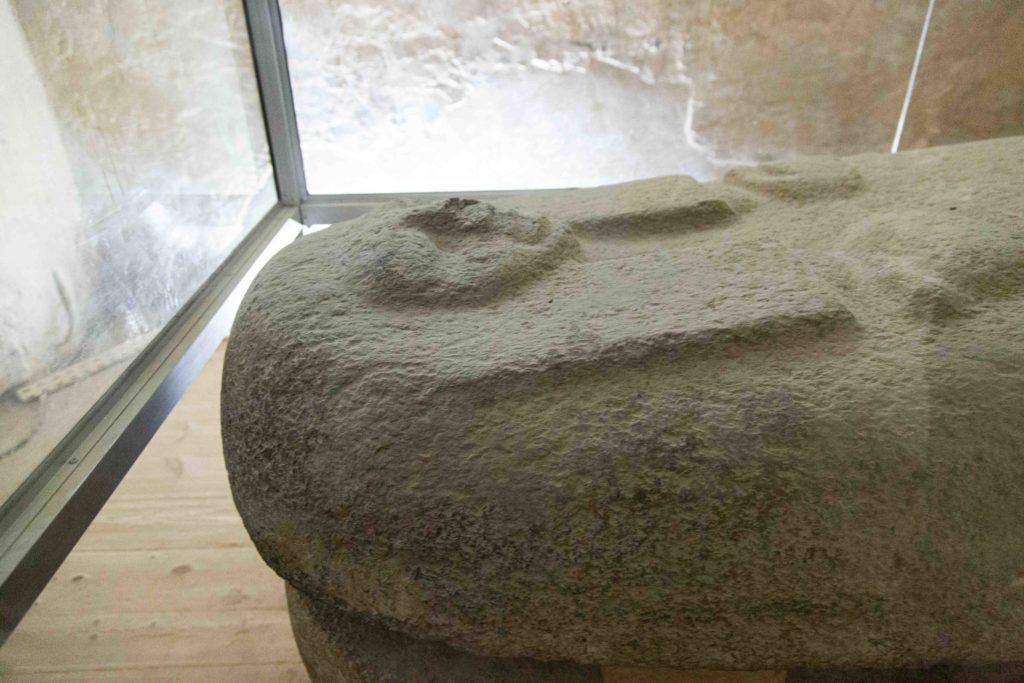
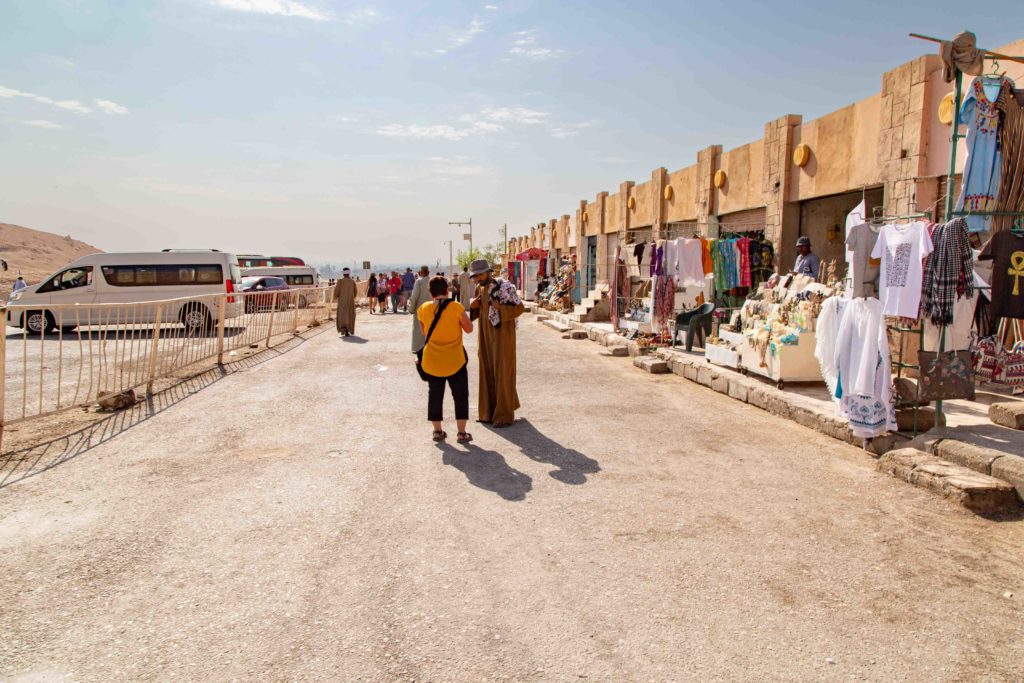
Our next stop was in the workers village of Deir el-Medina. The craftsmen who worked on the tombs were housed seperately from the rest of the egyptian population for security reasons. Also this allowed for the training of future craftsman by thru keeping the population concentrated. Info on life in the village was well documented by the villagers themselves, many notes (on stone) were found talking about transations that occured, ideas for work and gossip on affairs. Workers were also allowed to build their own tombs nearby and being artisans they are some of the most beautiful found.


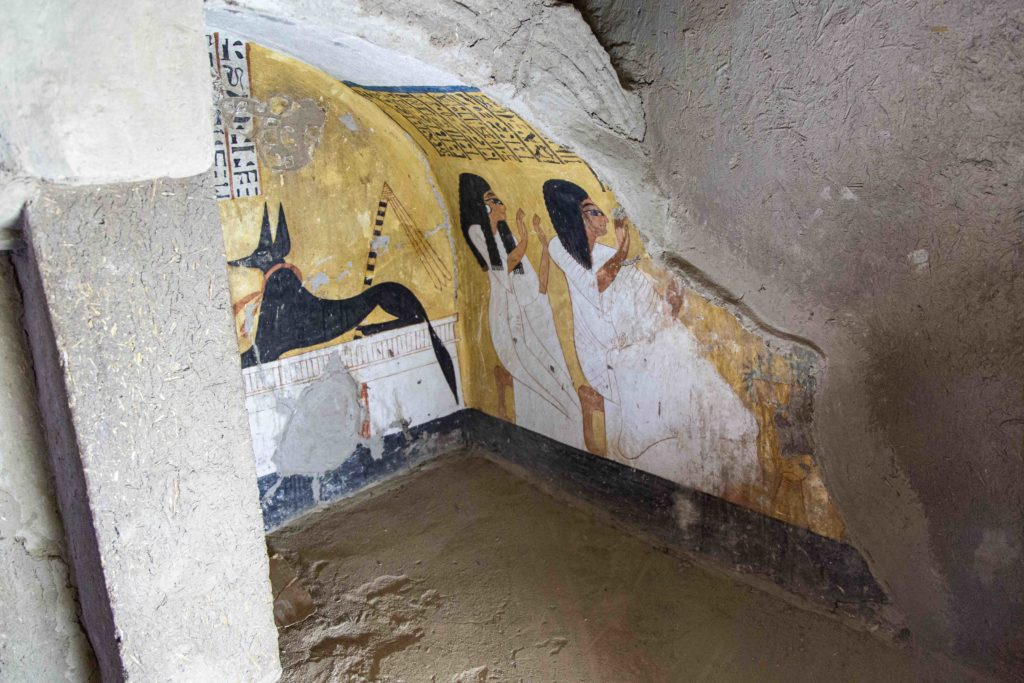


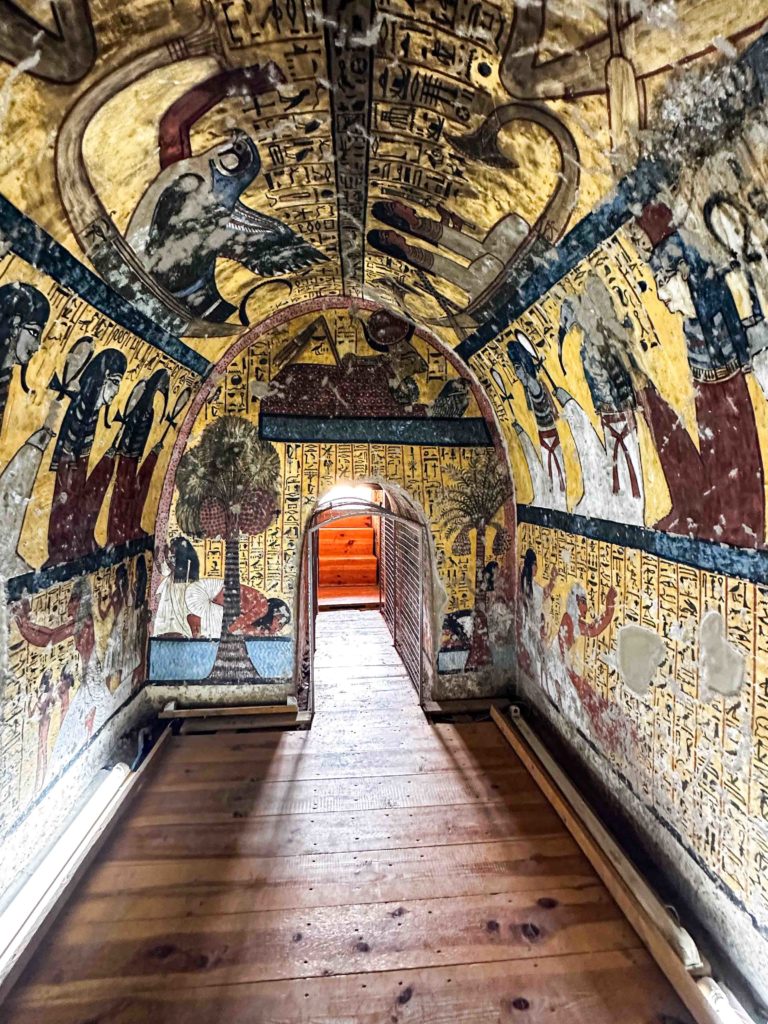
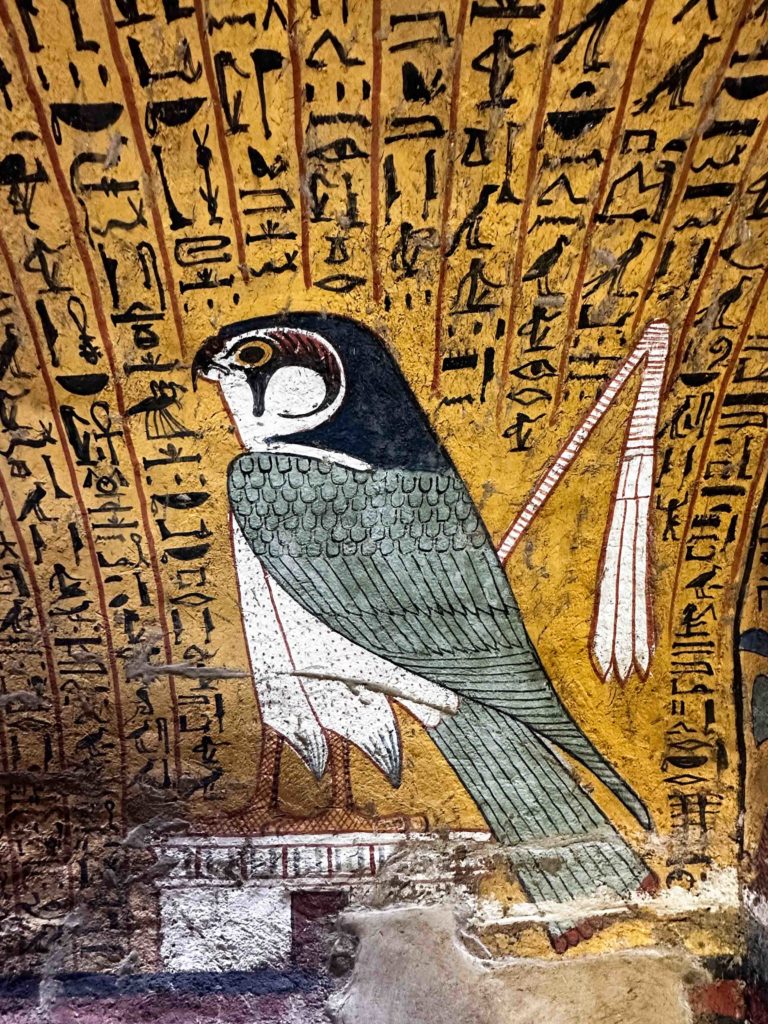
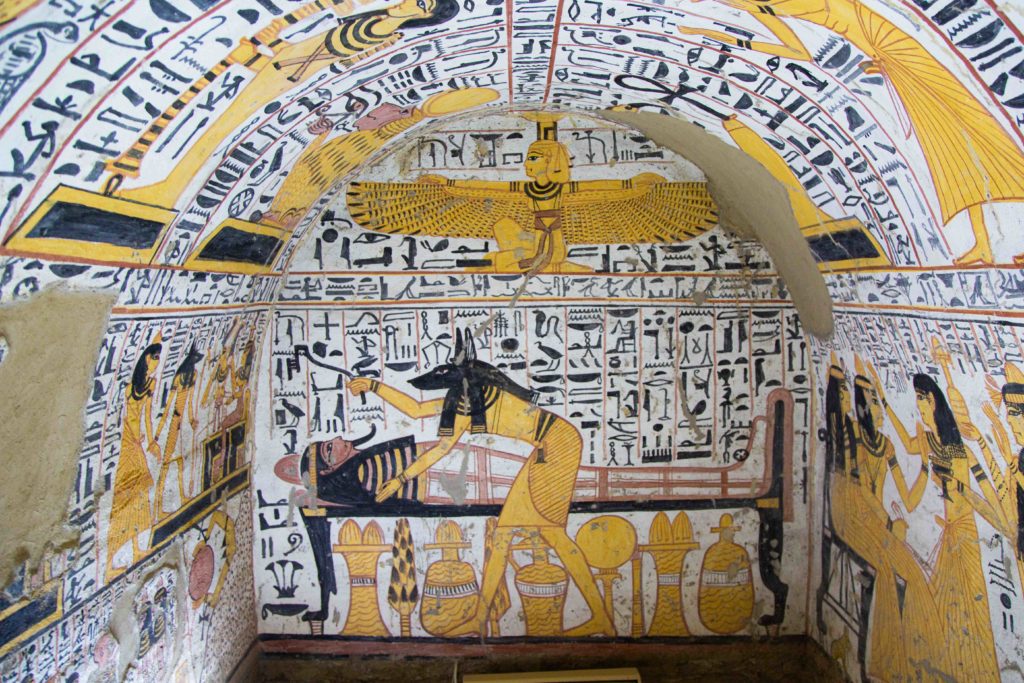
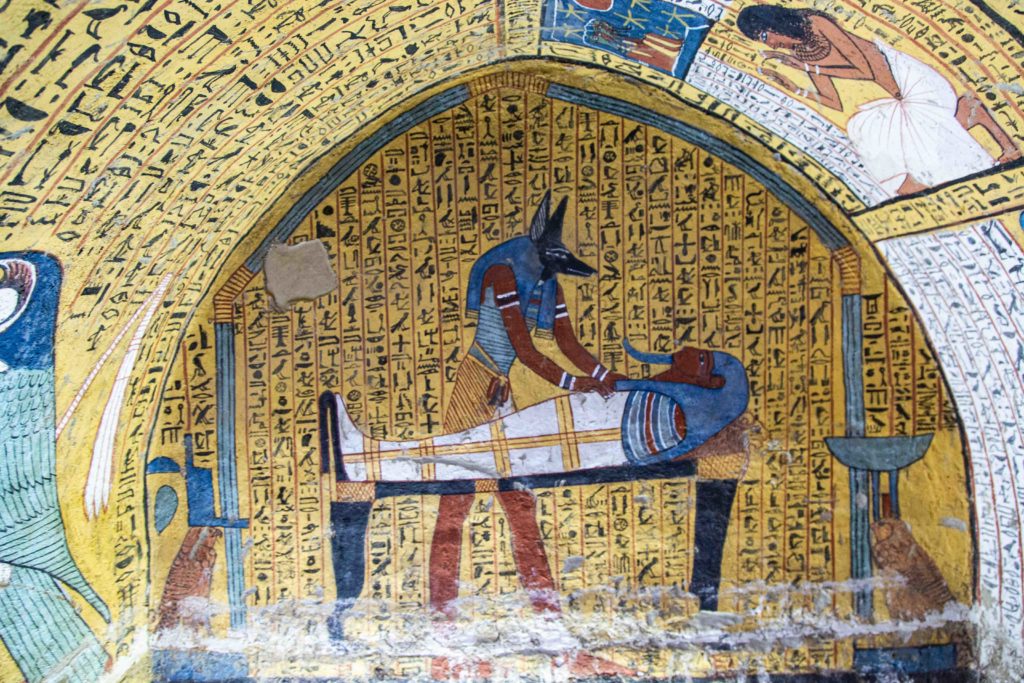
Our last stop was at Medinet Habu and the Mortuary Temple of Ramesses III. One intersting thing we learned here was Ramesses III not the son of the Ramesses II (who put his name and image everywhere) but were separated by about 100 years. III admired II so took a similar name and his Mortuary Temple resembled the nearby Ramesseum. This temple had somthing we had not seen before, a gate-house known as a migdol.

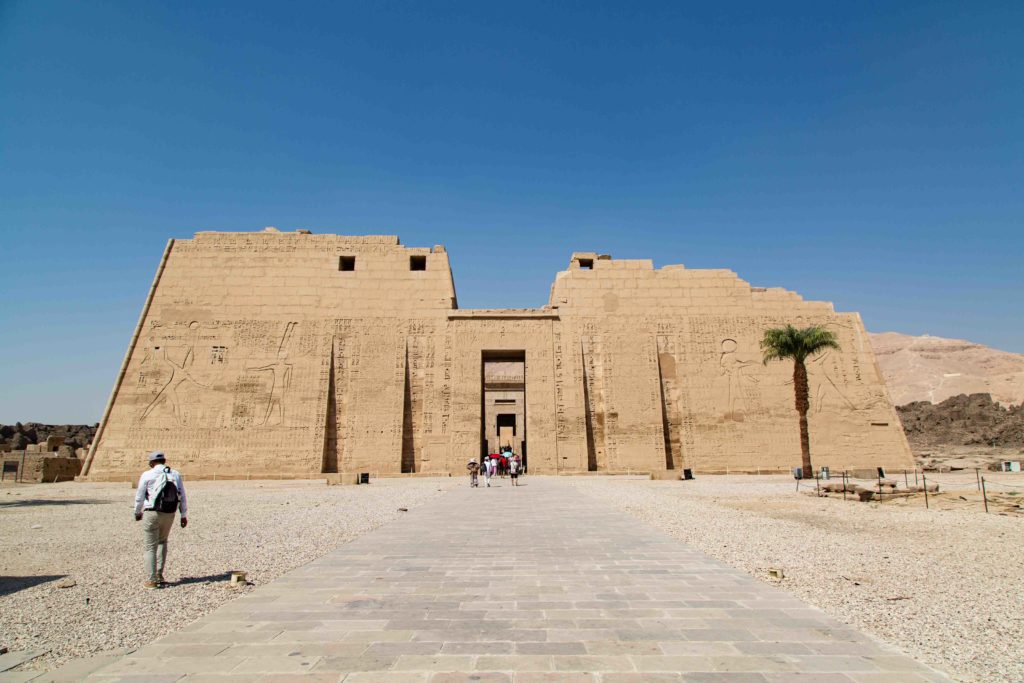
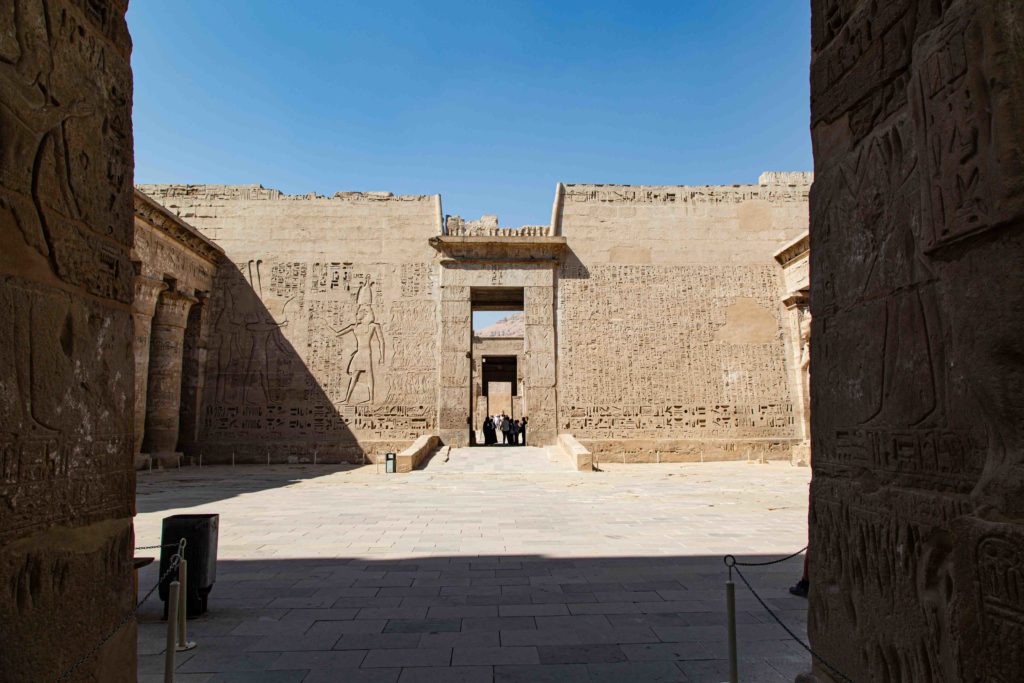

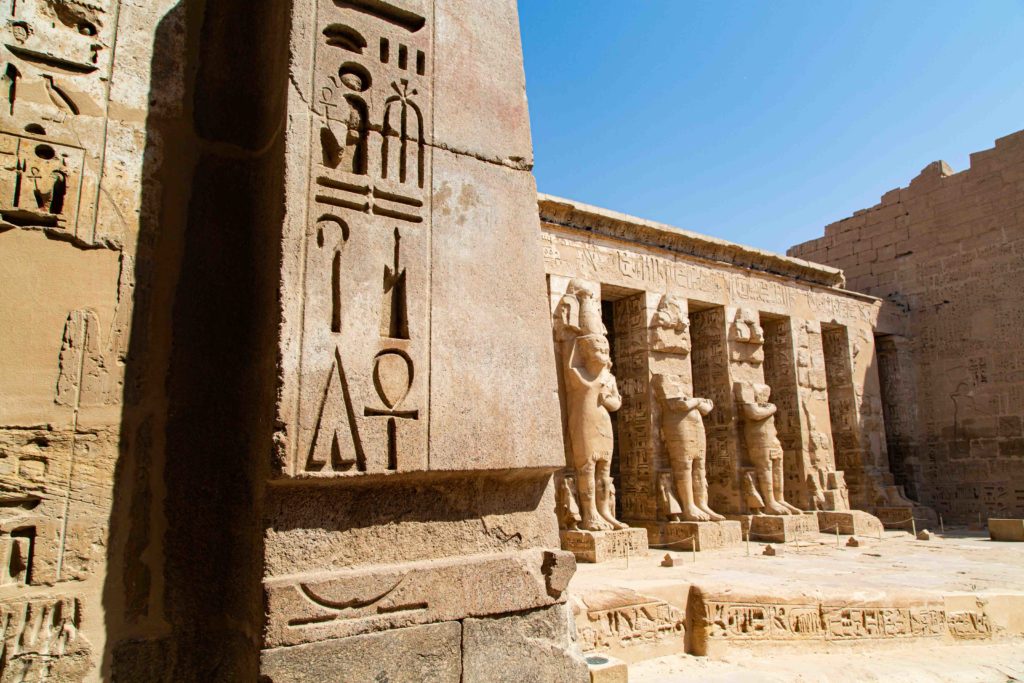


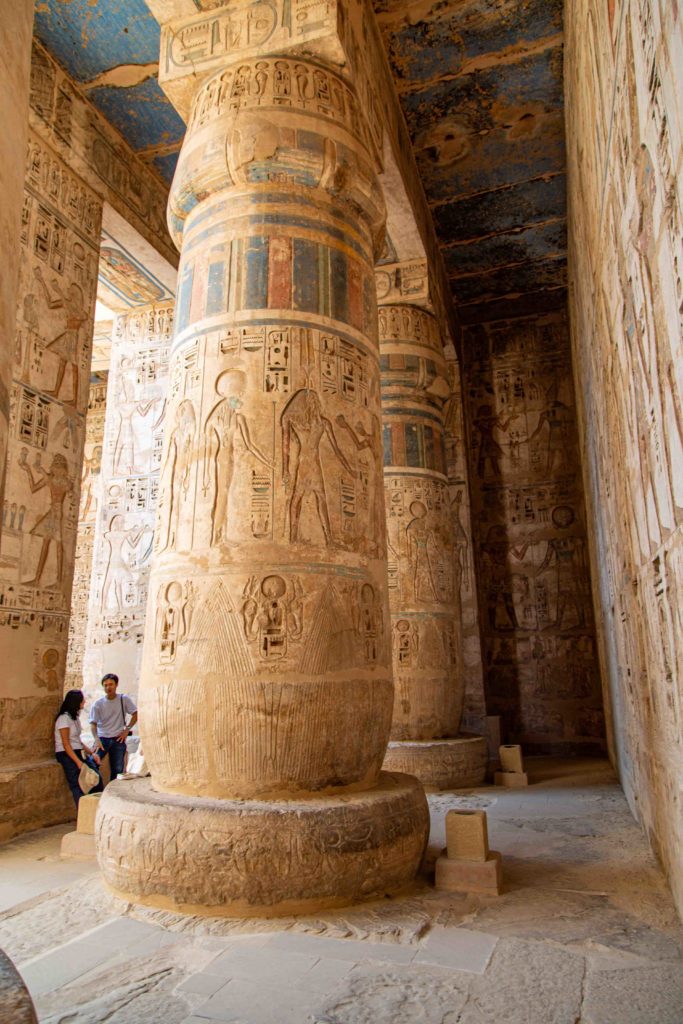
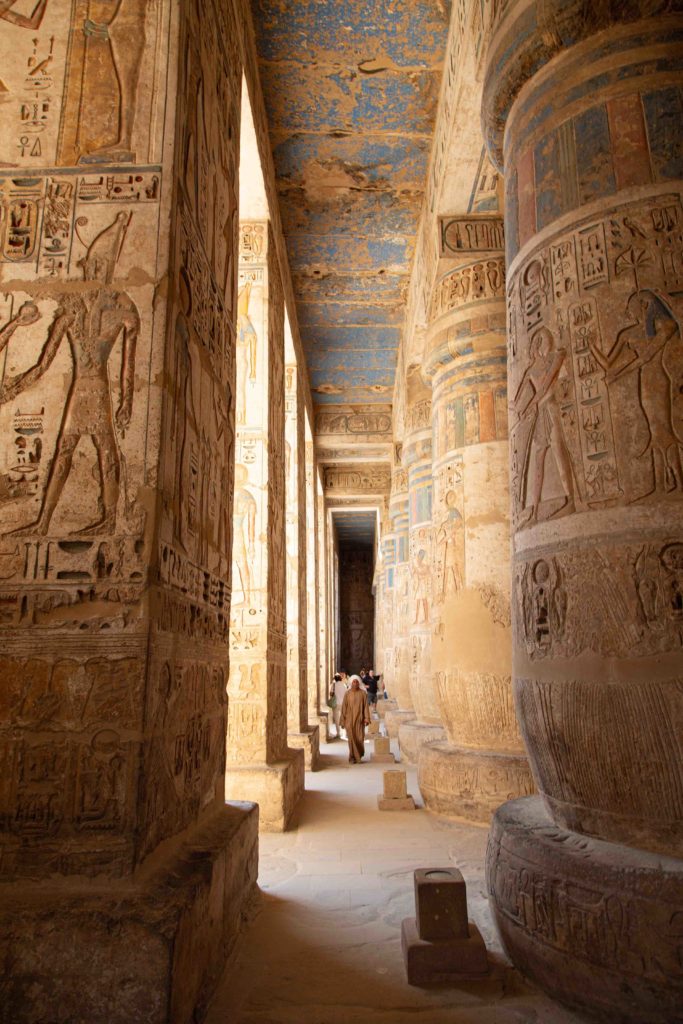
In our visits to temples our guide Mohamed pointed out cartouches with Pharoah’s names, telling us that sometimes a newer Pharoah would overwrite the name of a predecessor or even obliterate the older cartouches. He said Ramesses III took note of this practice so when his Mortuary Temple was built his name was carved very deeply into to walls, columns making it impossible to erase. Like in other temples, parts of this one were taken to build other structures later. Too bad but overall a beautiful final stop of the day.

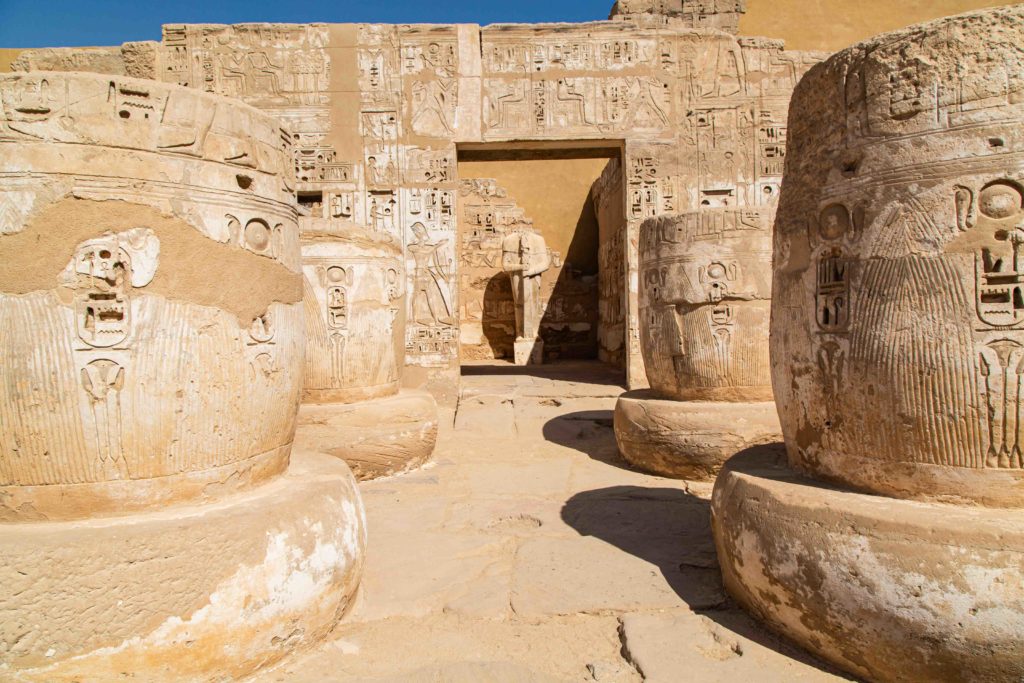
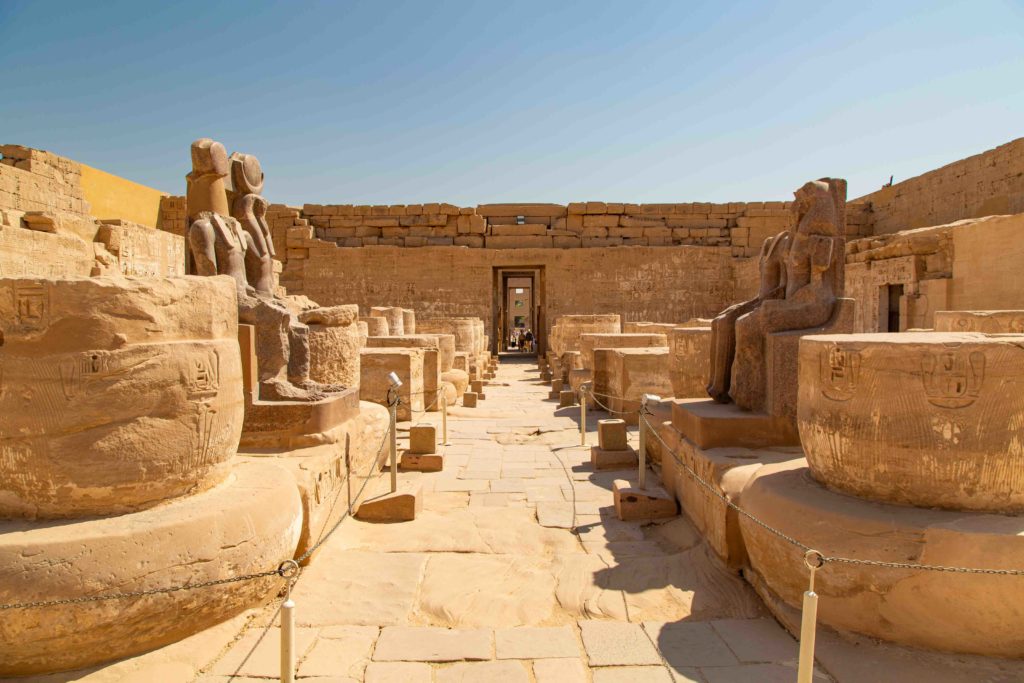
Alas our time on the Oberoi Zahra and we will miss the crew who took good care of us. We have taken up residence at the Winter Palace Hotel in Luxor. Built in 1905 it is a British colonial-era like the Old Cataract with thick walls. No sounds of of the city inside which is nice. Several web sites claim Agatha Christie wrote Death on the Nile while staying here. The Old Cataract in Aswan claims the same thing… A mystery…
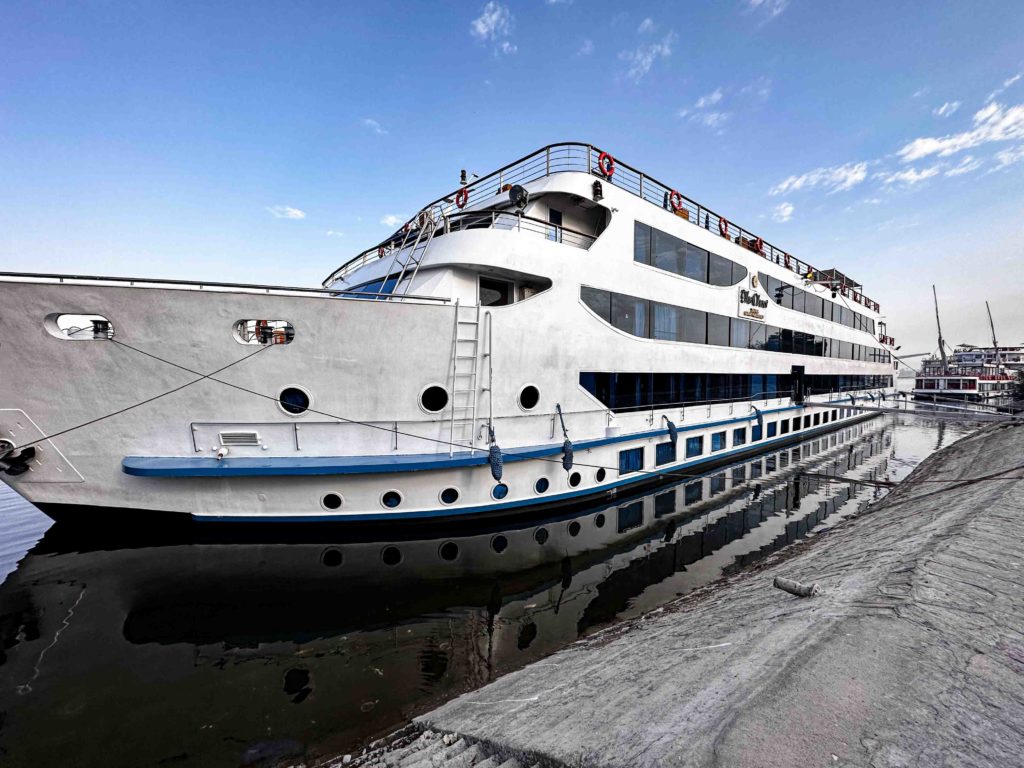
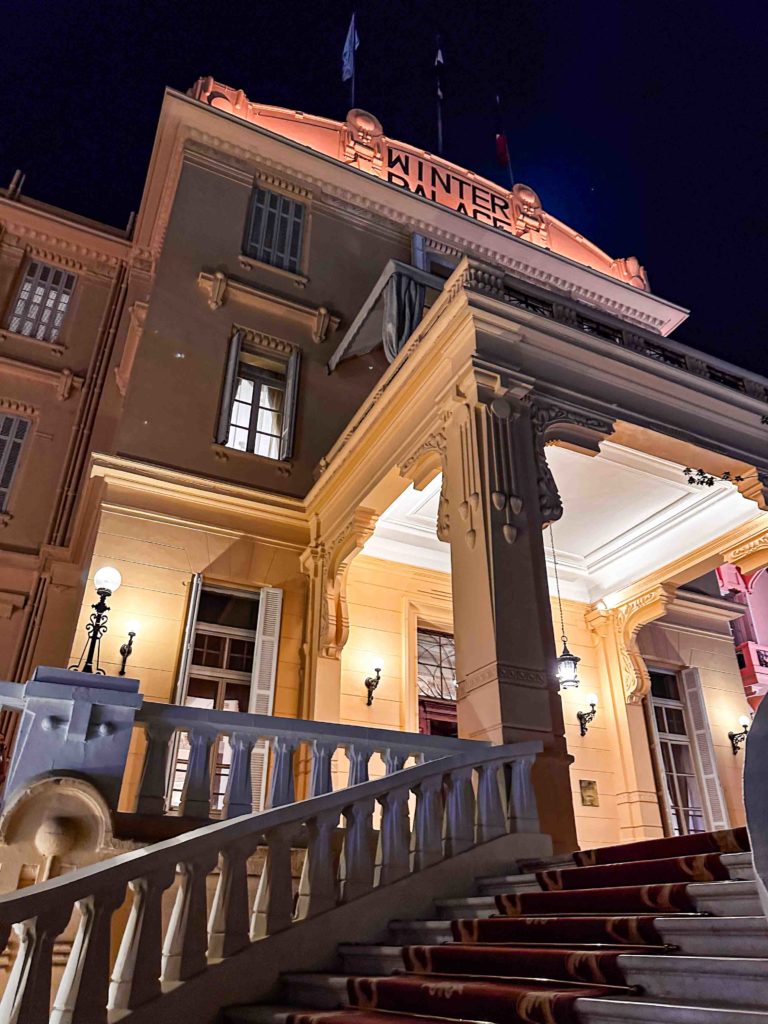
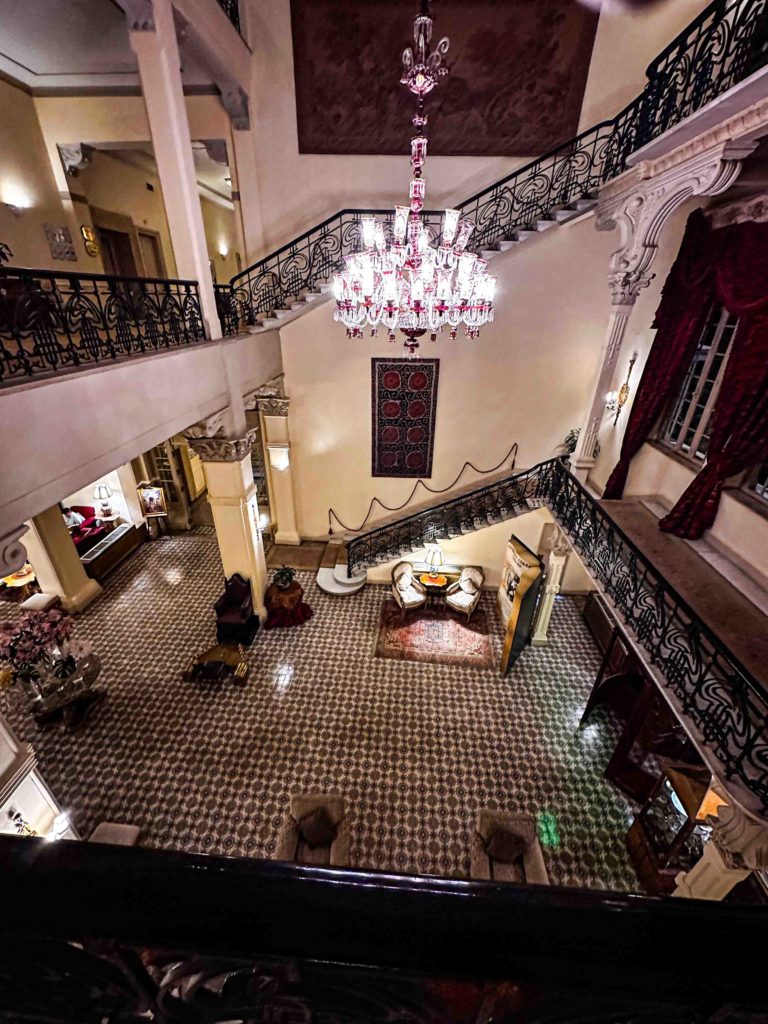
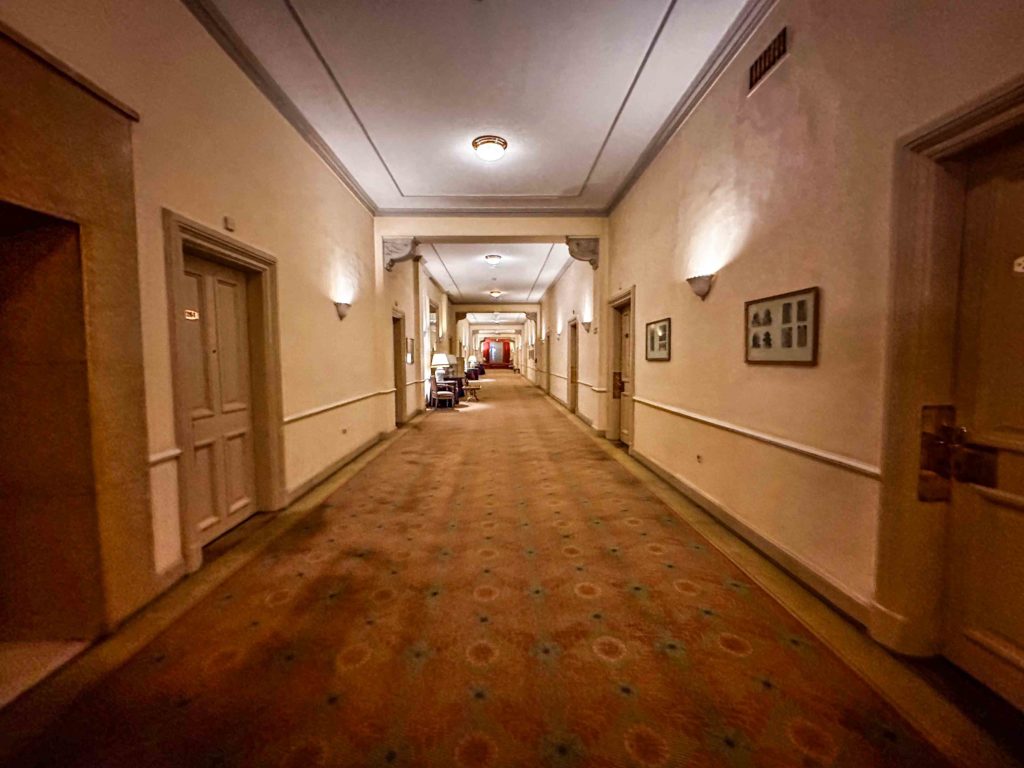
One difference here in Luxor is the sellers are a bit more aggressive in trying to get our attention when we step outside. My new super power is ignoring…
